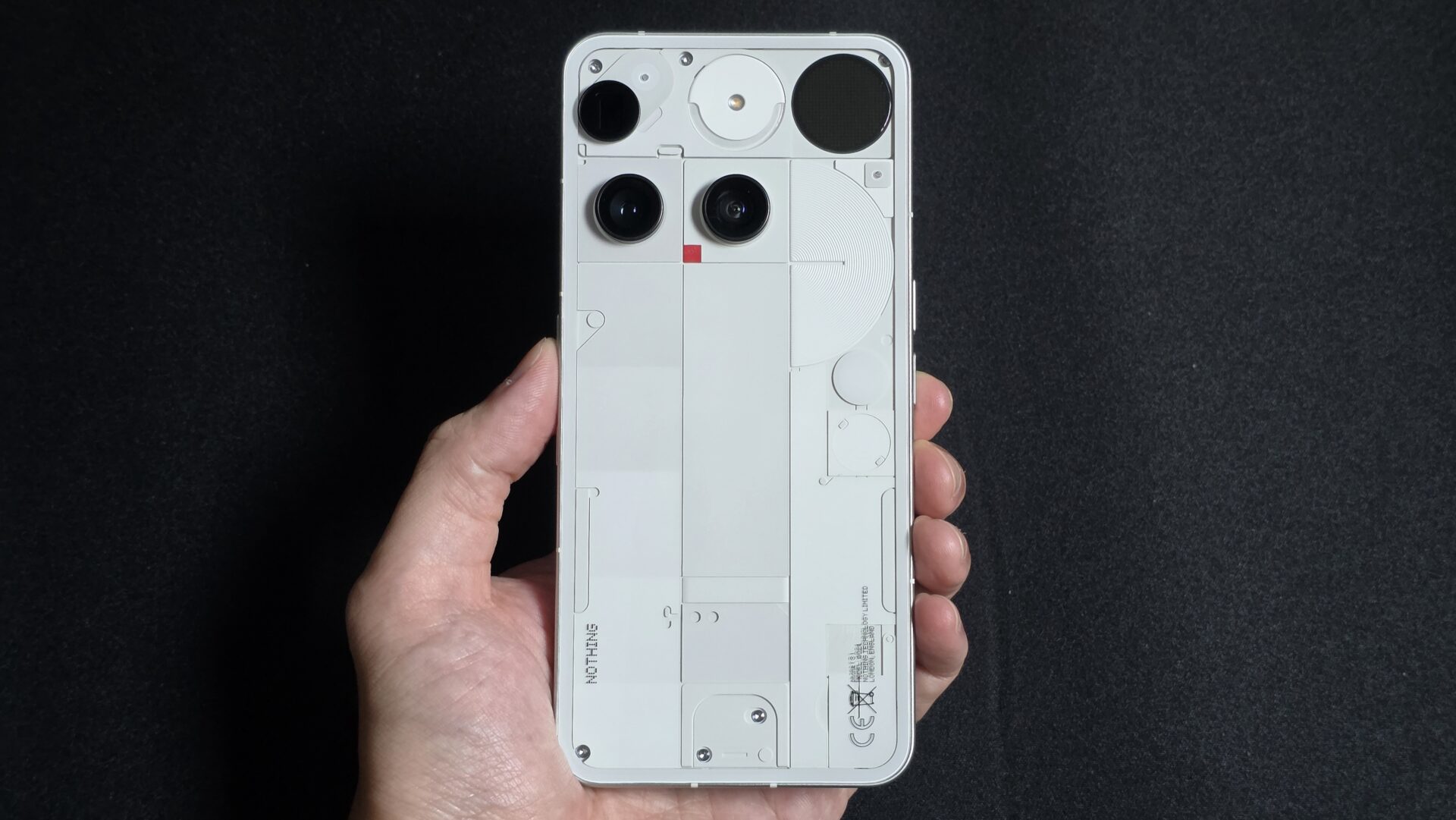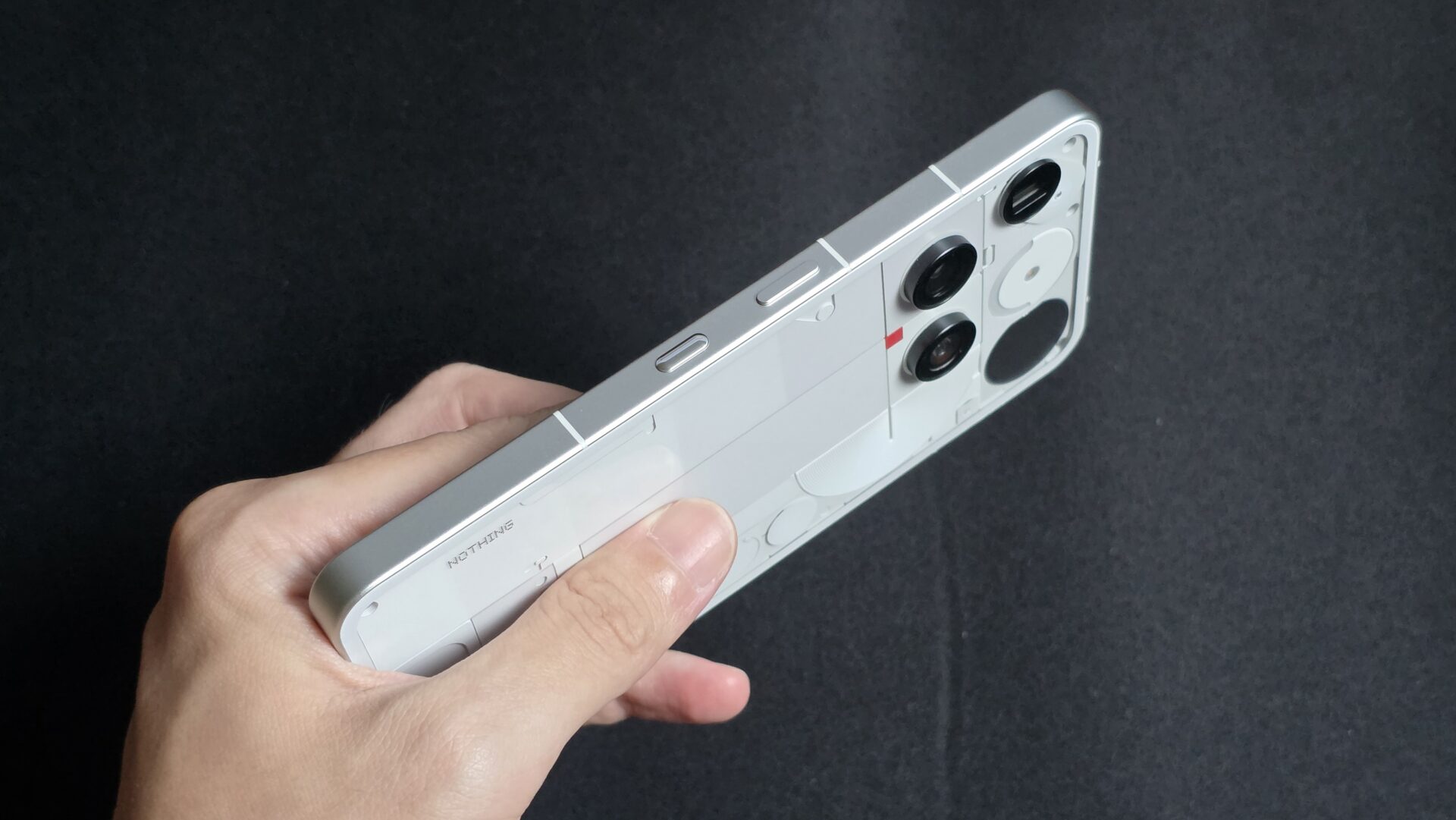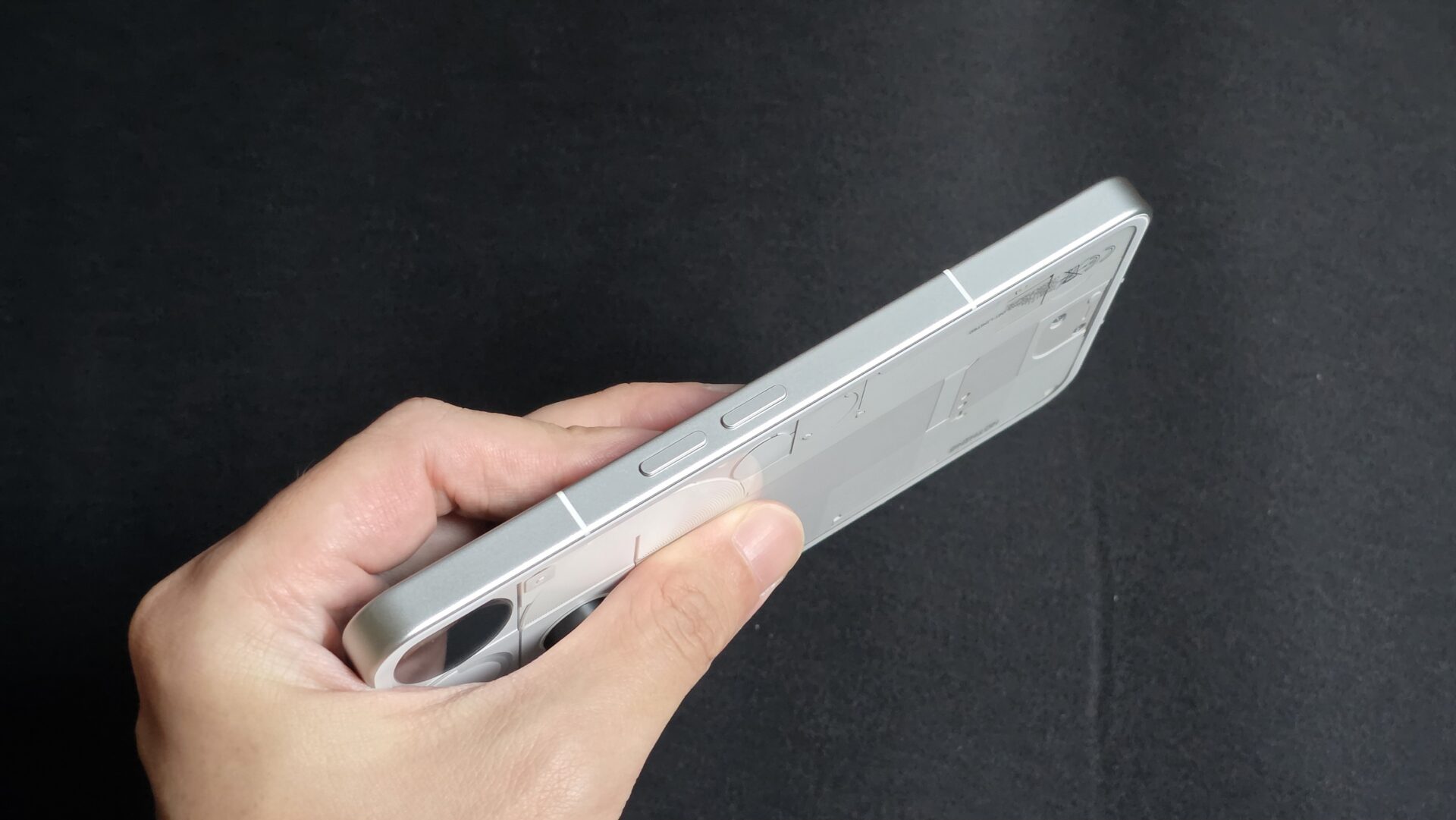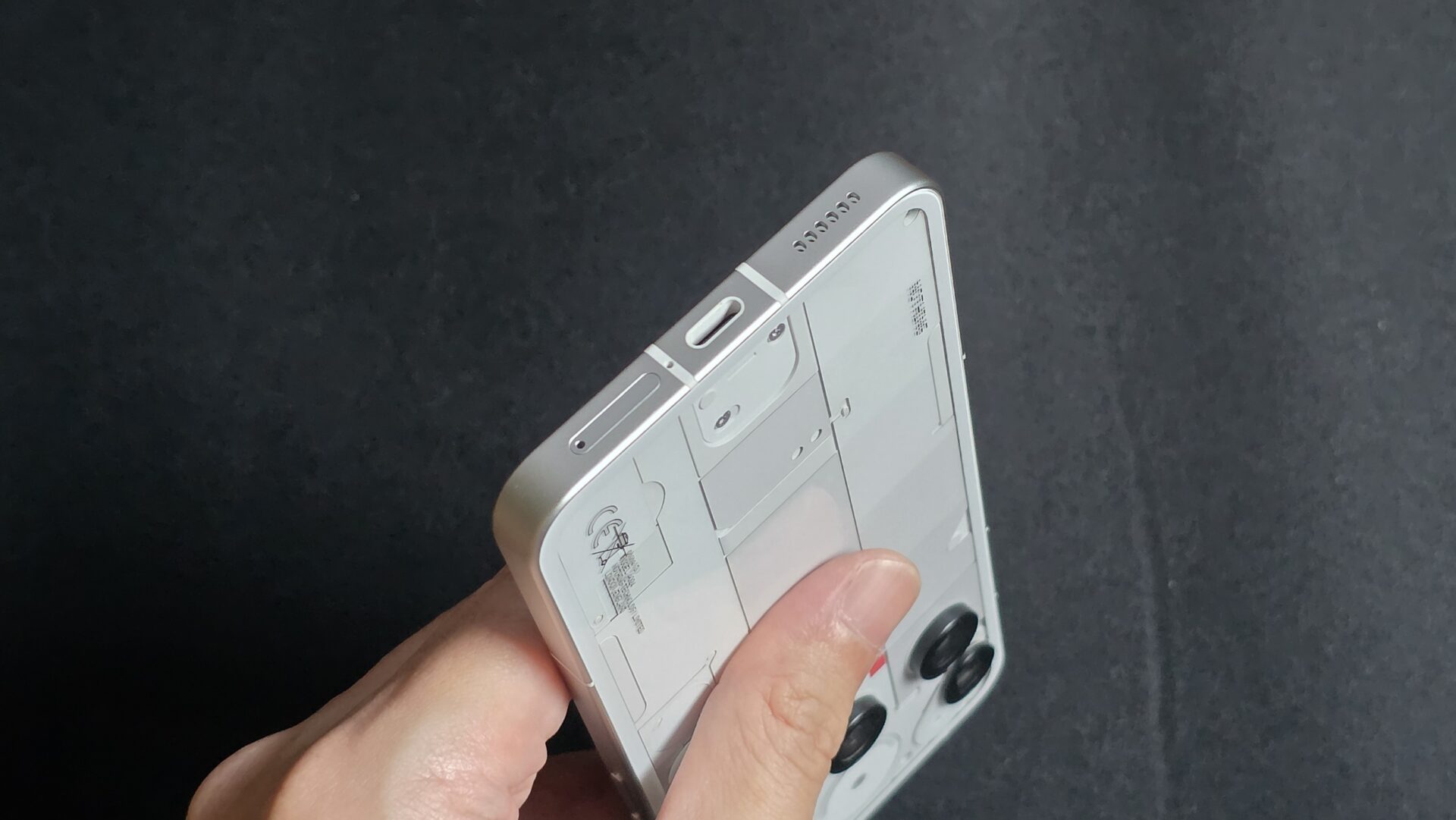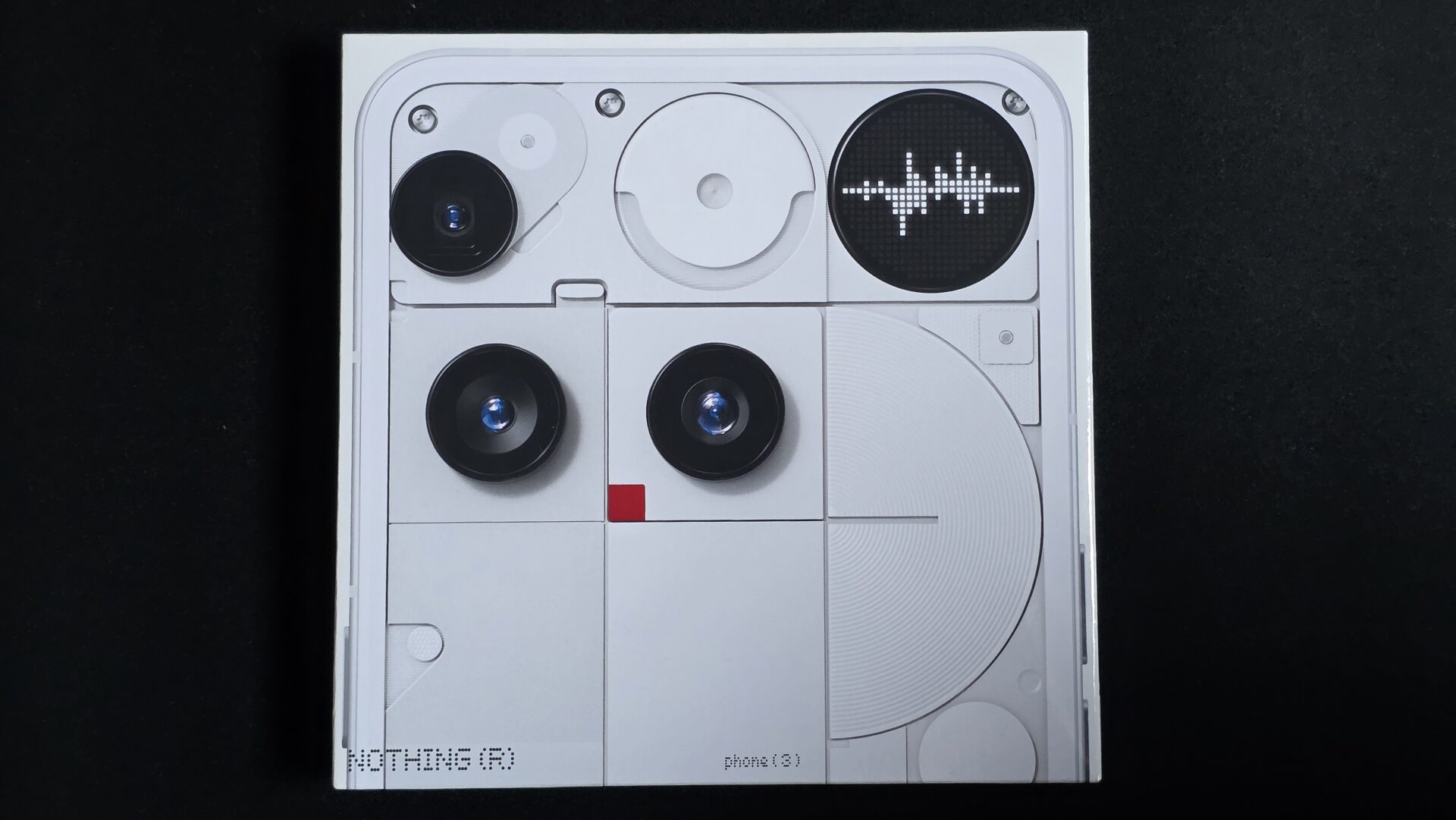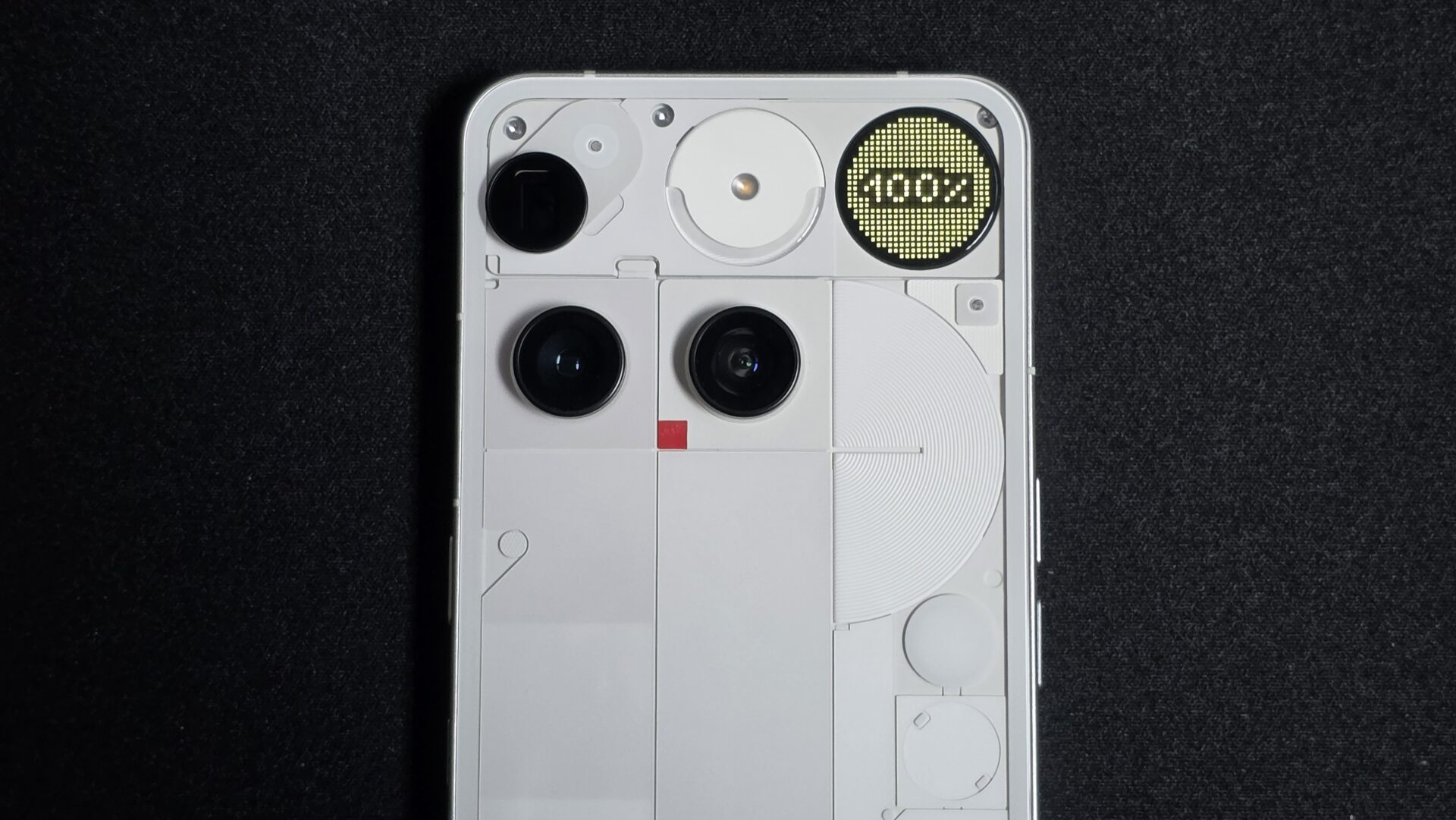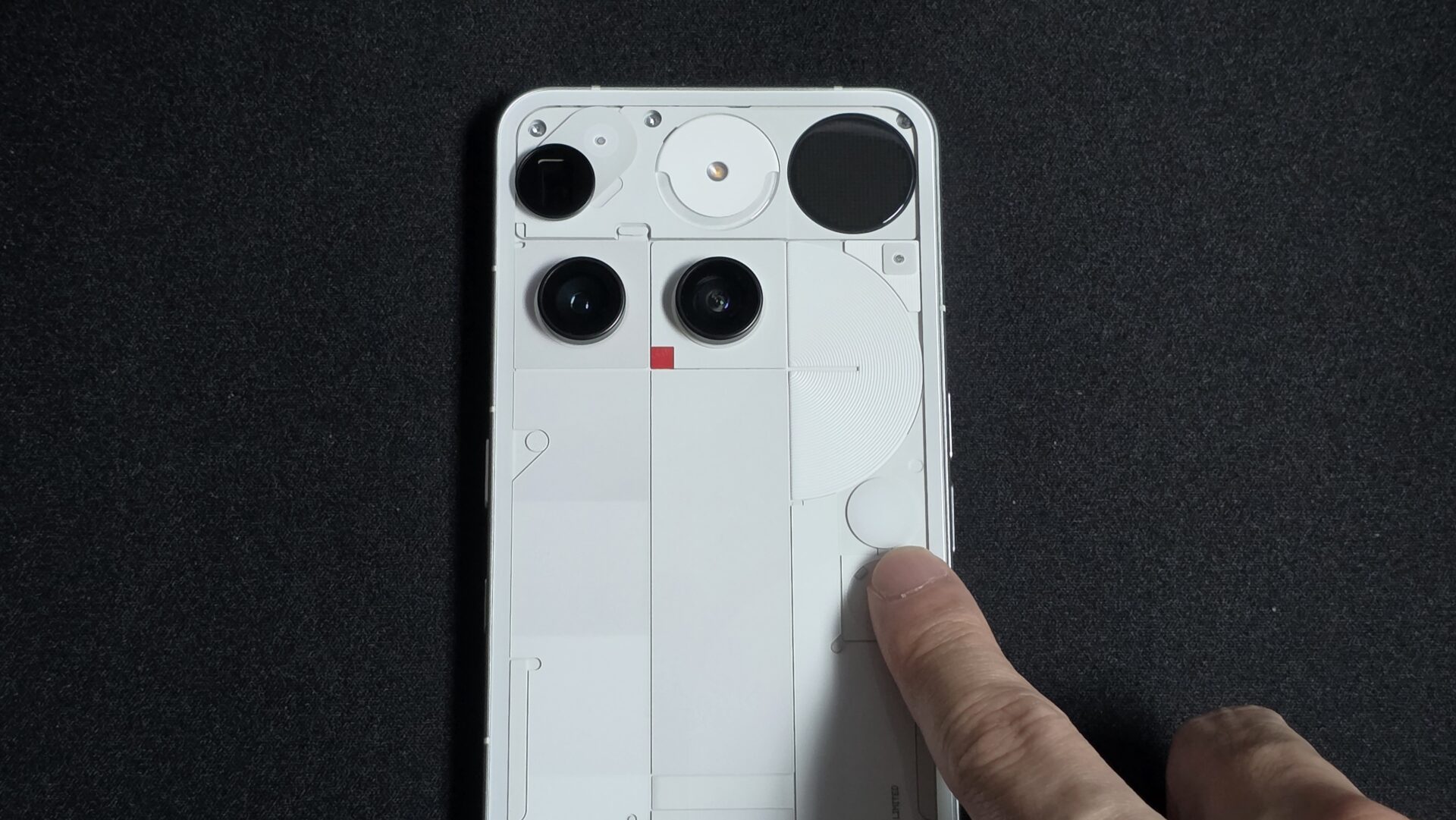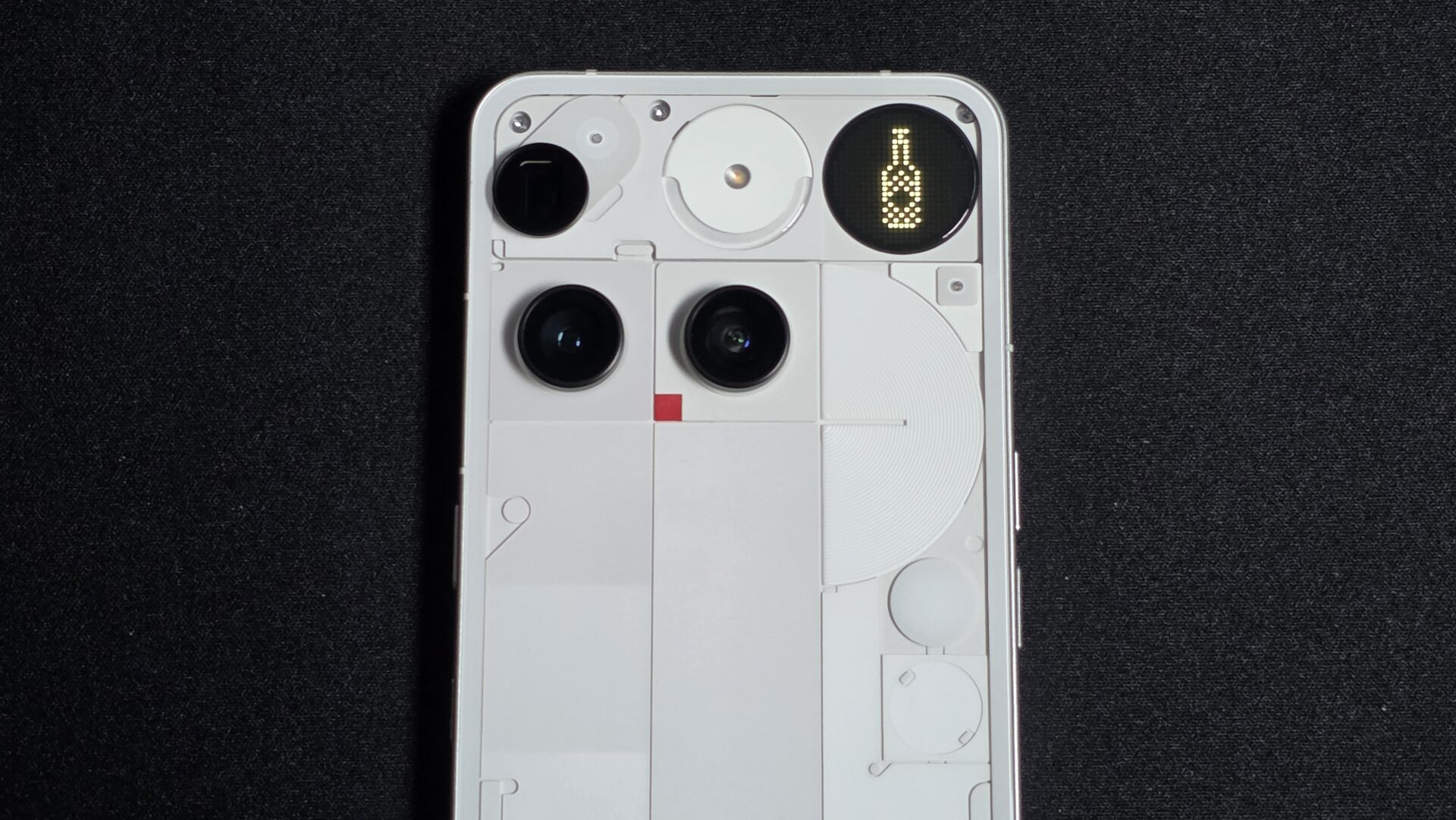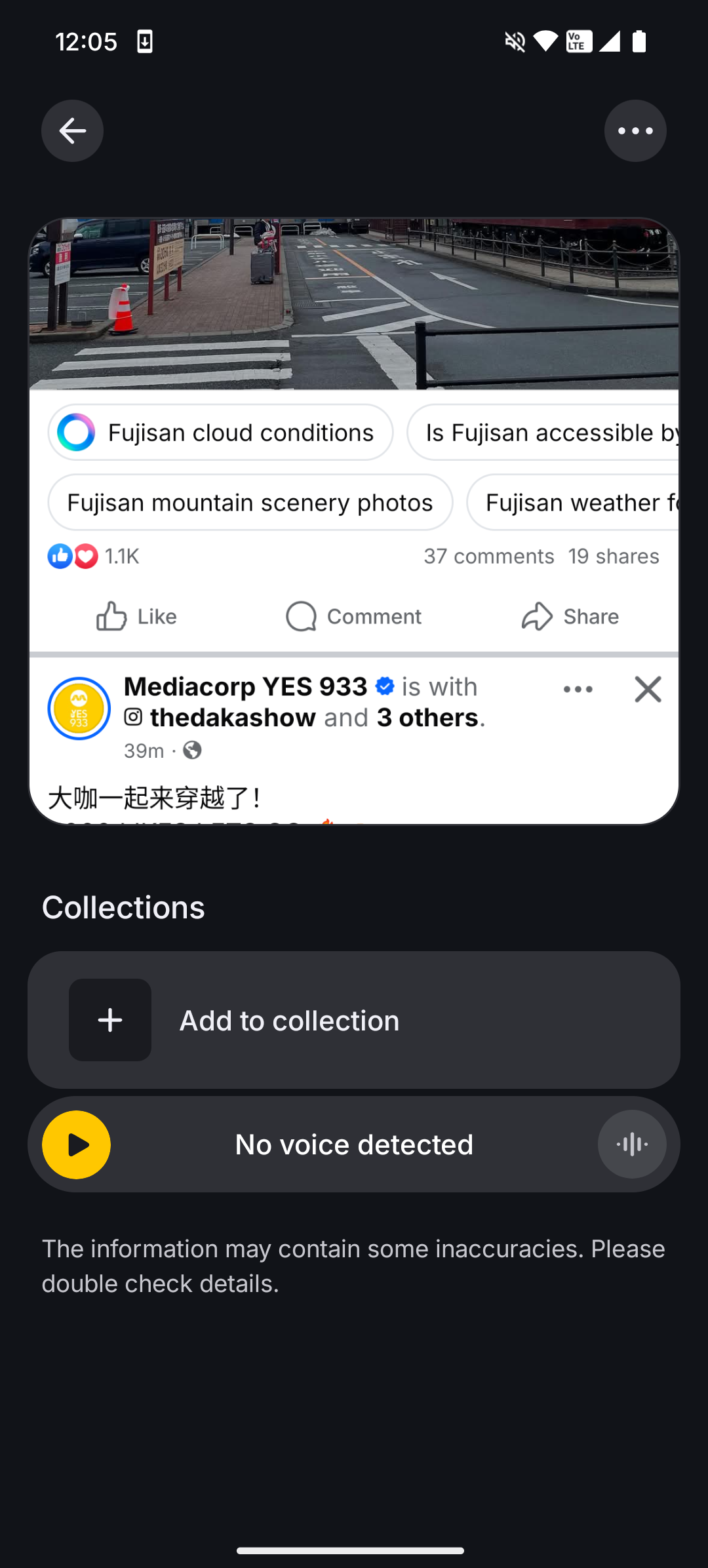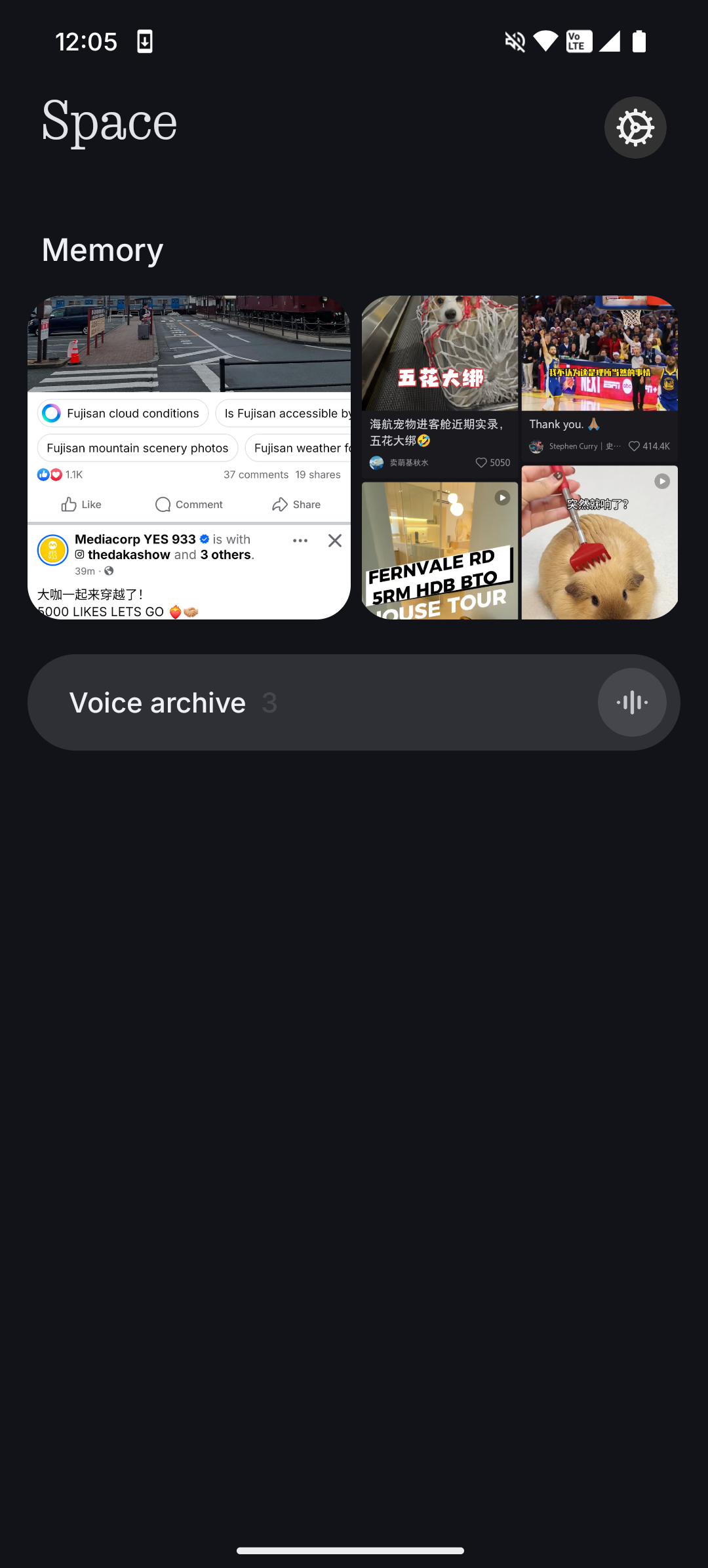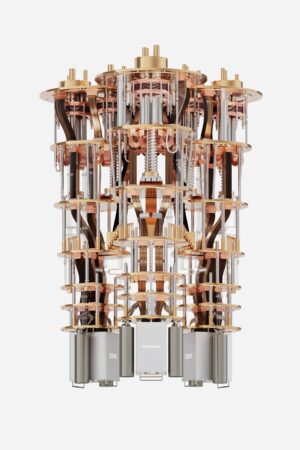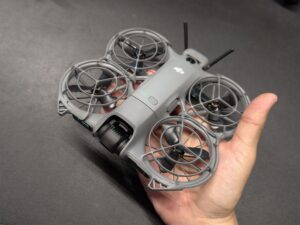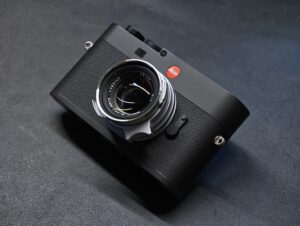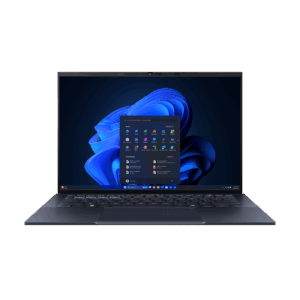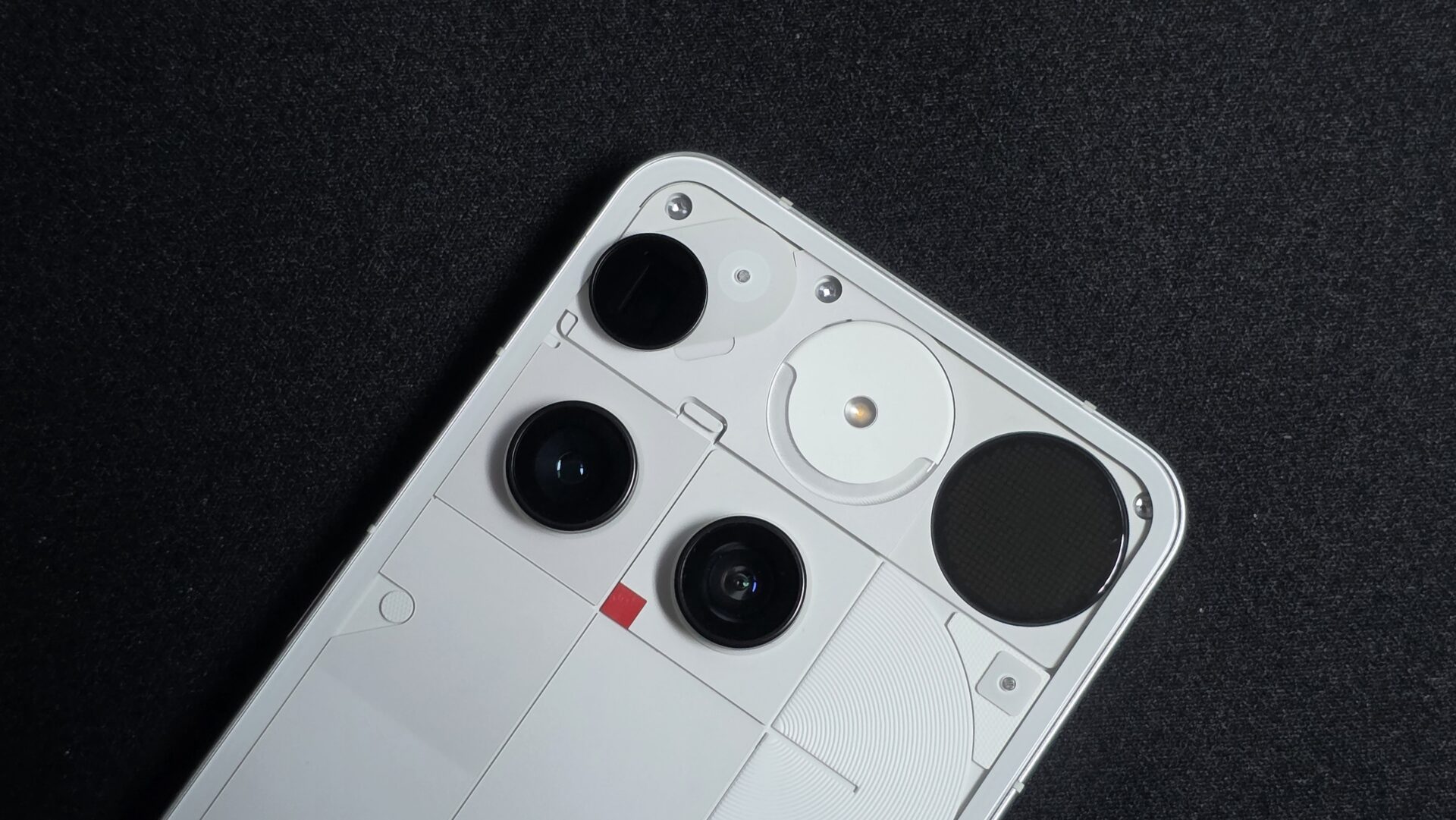
It has taken two years for Nothing to refresh its flagship line and launch the Nothing Phone (3), a 6.67-inch Full HD+ phablet with a Qualcomm Snapdragon 8s processor and wide-ultrawide-telephoto shooter. In between, the brand had turned its attention to sub-flagships and a further budget-oriented sub-brand. Is it true that good things come to those who wait?
Spoiler alert: This phone is a “flagship-lite” in more ways than one, making a small compromise in various ways for a slightly lower price. Sorry for coining another term after “value-oriented flagships” and “premium flagships”, but brands are carving up the flagship tier ever more finely.
As we predicted before, the price of Nothing’s high-end devices has continued its upwards trajectory. The Nothing Phone (3) now costs S$1,199 with 16GB memory and 512GB storage, or just a few hundred dollars less than flagships of other known makers.
For want of a better phrase, let’s call this a “flagship-lite” price. Here’s wishing Nothing prices don’t not go up any further in future.
Design
Nothing has taken into account its design evolution over the past few devices. The Nothing Phone (3) has matte metal sides that are rounded at the four corners, but angular where it meets the flat front and rear surfaces. There is just the right amount of chamfering on these angular edges to prevent the phone from digging into your palm.
The outcome is a sharp looking device that is easy and comfortable to hold, while maximising every inch of its display for usability. The 160 x 76 x 9mm frame weighs 218g, in line with most flagships toting a near 6.7-inch display.
Our review unit comes with a white rear plate and features its trademark glyph design. To me, there is little not to like. It is not tacky, and the glyph patterns on the white background takes attention away from the finger marks that accumulate as one uses the device.
Glyph Matrix
In this generation of Nothing’s evolution, the maker has decided that Glyph will go beyond being a visual tool with a standout design to one that you can interact with.
Known as the Glyph Matrix, it is a circular white LED display array that can display a clock, battery life, custom images, animations and app-specific messages. You can even play Spin the Bottle, Rock Paper Scissors, and Magic 8 Ball.
To “play” the games, a haptic button in white sits on the rightmost middle-third on the back of the phone. Press it, and you can play… truth or dare with some friends, maybe. I thought this made the original Glyph interface more useful, while retaining customisability.
Screen
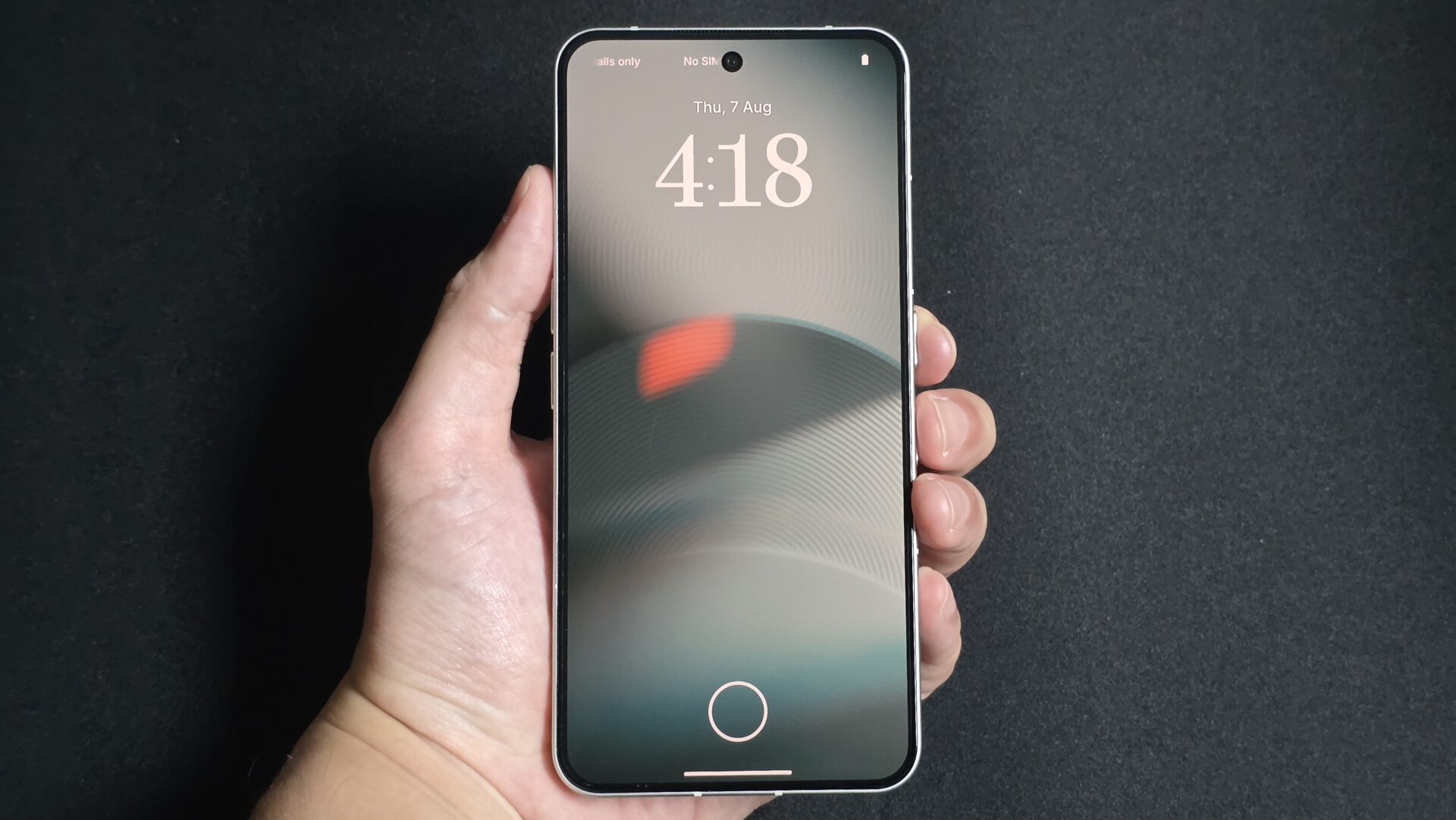
The Nothing Phone (3) features a 6.67-inch OLED display of 1,260 x 2,800 pixels, with a slightly longish aspect ratio of 20:9. Shatter protection is courtesy of Corning, Gorilla Glass 7i on the front and Gorilla Glass Victus on its rear. A “flagship-lite” arrangement. I thought it better to protect the front display with the stronger glass, though.
The screen is sufficiently bright under direct sun, though not the highest. I measured a maximum of 1,550 nits under direct sun with adaptive brightness off, and 1,840 nits with the latter on.
The Phone (3) continues Nothing’s practice of locking onto a 120Hz display refresh rate that is not as great for battery life. It drops to 90Hz while in apps, and 60Hz when playing video. This behaviour has remained unchanged since earlier Nothing devices.
Performance
The Nothing Phone (3) packs a Qualcomm Snapdragon 8s Gen 4 processor that sits one rung below the chipmaker’s top-of-line Snapdragon 8 Elite. An Adreno 825 graphics core accompanies the chip. Not truly flagship, but more powerful than the Mediatek used in Nothing “a” and CMF devices.
The high-end Qualcomm chip, combined with the light, monochromatic Nothing OS implementation meant virtually no lag or heaviness during my tests
3DMark for Android (Wild Life Extreme), which tests the device’s handling of commonly-used game rendering engines, churned out a score of 4,100 over three runs, or about 25 frames per second. Asphalt Legends Unite ran smoothly and a little jaggy, but one can make out the anti-aliasing in action.
Software
NothingOS prides itself on a monochromatic palette, complete with custom icon packs for the most common apps. The home screen app icons automatically take on a monochrome colour tone and shrinks to fit into its black orb-like themed icon style. Not perfect, but an implementation I found sufficiently versatile.
Essential Space is activated through a button on the right side of the device below the power button. A change introduced in the CMF Phone 2, a glossy button helps one avoid the button haptically.
Hold the Essential Key to take a screenshot of what one considers important, and press once to record a voice note to dictate why so. Double press to enter Essential Space at the end of the day, and AI appears to do some analytical work with your inputs to provide day-to-day summaries.
I can see the use case – I frequently struggle to find a particular screenshot or picture after a while. If I can extend this to any shots in the gallery, I can even catalogue old images, and come back to them again through a search more easily after.
Other features and battery
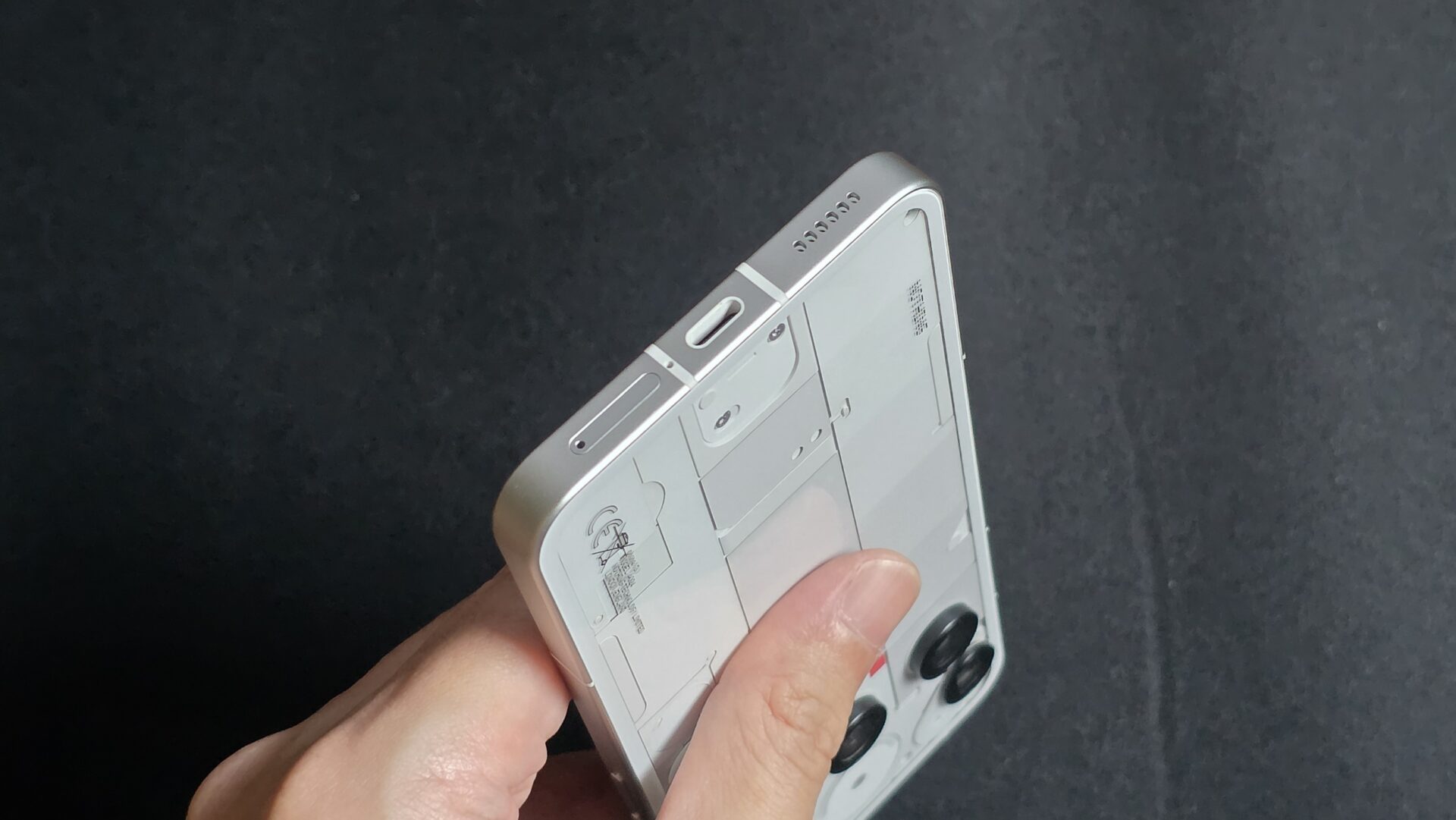
The Nothing Phone (3)’s SIM card tray holds two SIM cards, with no support for memory expansion cards. Opening the card tray requires a tray eject pin.
The bottom speakers share the bottom rail with the SIM card tray, and the top speaker is with the speakerphone sitting up top the device for calls.
The loud but muffled audio from my recent experiences with Nothing devices persisted. I listened in closer detail, and found the cause to be weak timbre, or the higher pitches of voice and cymbal-like percussion notes. I hope this gets looked into.
The fingerprint sensor is built onto the lowest 10 per cent of the display. This is the same as earlier Nothing and CMF devices, and feels just a tad too low. It is fast and accurate, though.
The phone is IP68 rated for dust and water resistance, good for soaking in water and be used near a (clean, fresh water) pool.
Battery life from the 5,150mAh silicon carbide cell is decent. I calibrated the screen to 200 nits brightness, and ran the PCMark 10 for Android’s Work 3.0 Battery Life test with Wi-Fi on. With dynamic refresh rate turned on, the device lasted 16.5 hours.
The phone supports competitive and fast 65W wired charging with a compatible USB-C Power Delivery 3.0 adapter (not included). Wireless charging is rated for 15W, 7.5W for reverse wired charging and 5W reverse wireless charging.
65W is quicker than some flagships, in line with the more innovative Chinese phone makers.
Cameras
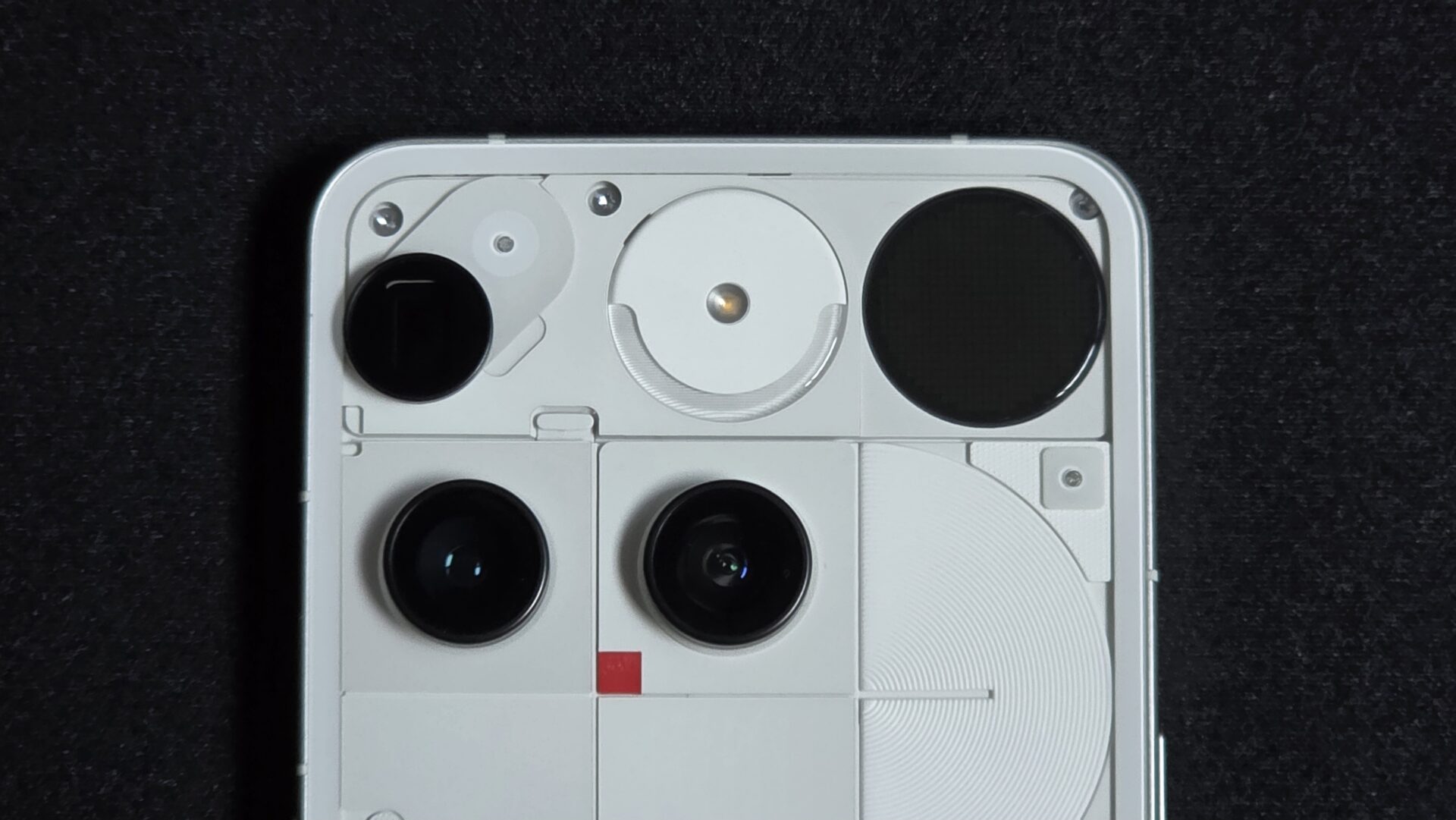
An wide-ultrawide-telephoto-camera array is par for the course at the flagship price range. The question is how well it performs.
Overall, the pictures from the new Nothing phone are definitely comparable to competing flagships. Not the best of best, but they are appreciably better than the more midrange devices from Nothing and CMF in the past year.
The ultrawide consistently does less well with detail and some level of over and underexposure, but the main and telephotos are very good.
Wide – 50 MP, f/1.7, 24mm, 1/1.3″, PDAF, OIS
Telephoto – 50 MP, f/2.7, 1/2.75″, PDAF, 3x optical zoom. OIS
Ultrawide – 50 MP, f/2.2, 114˚, 1/2.76″
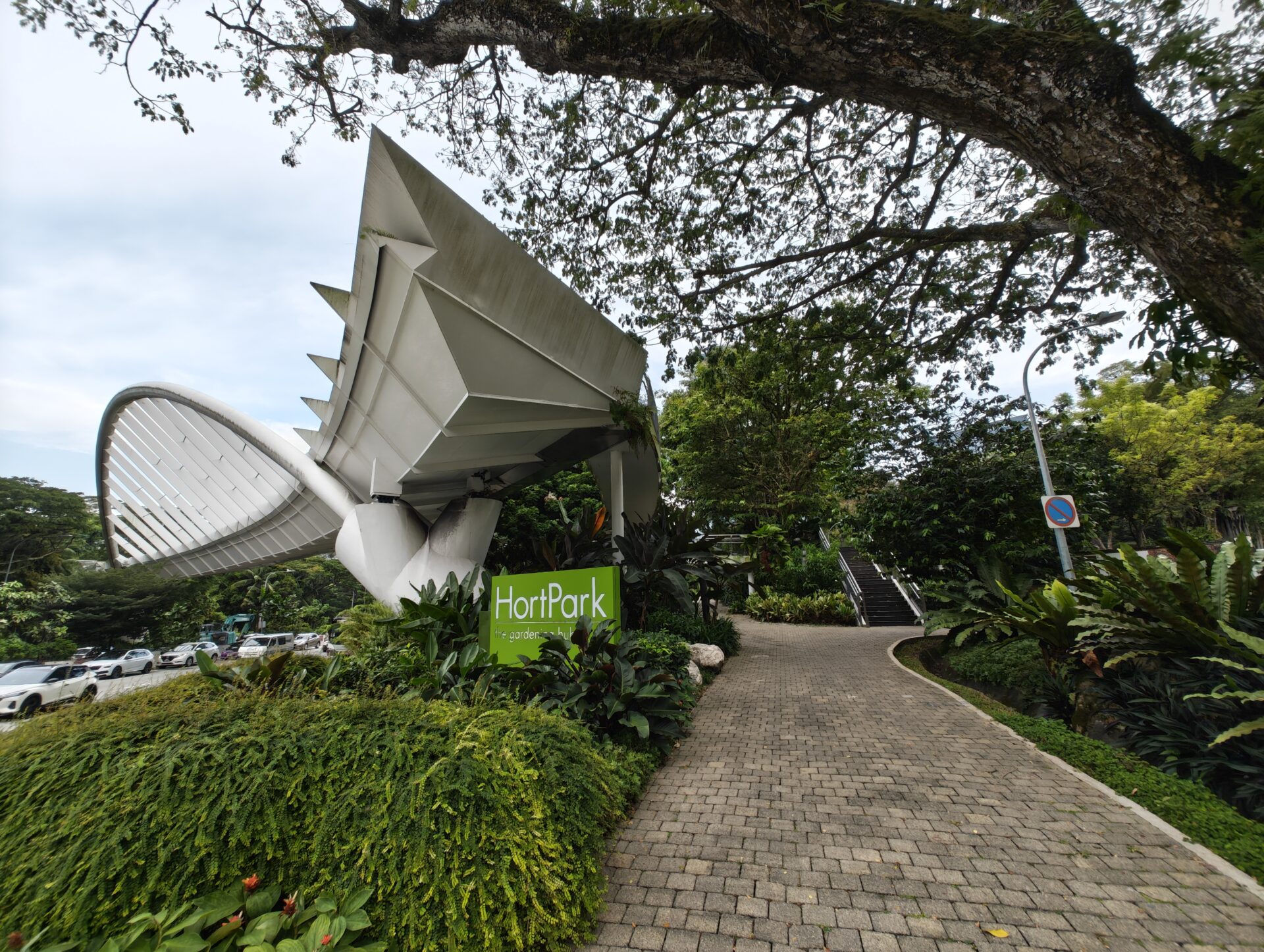
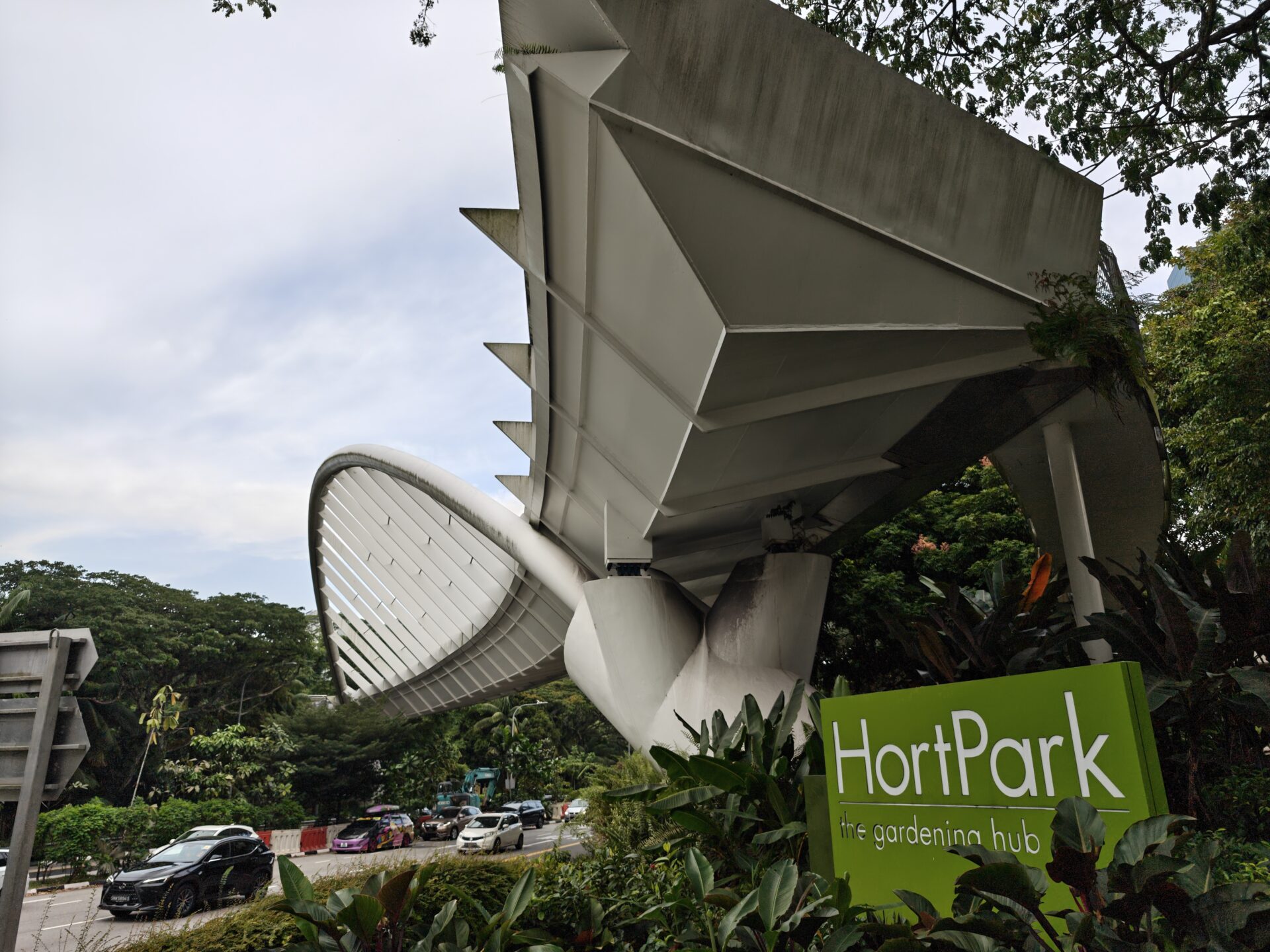
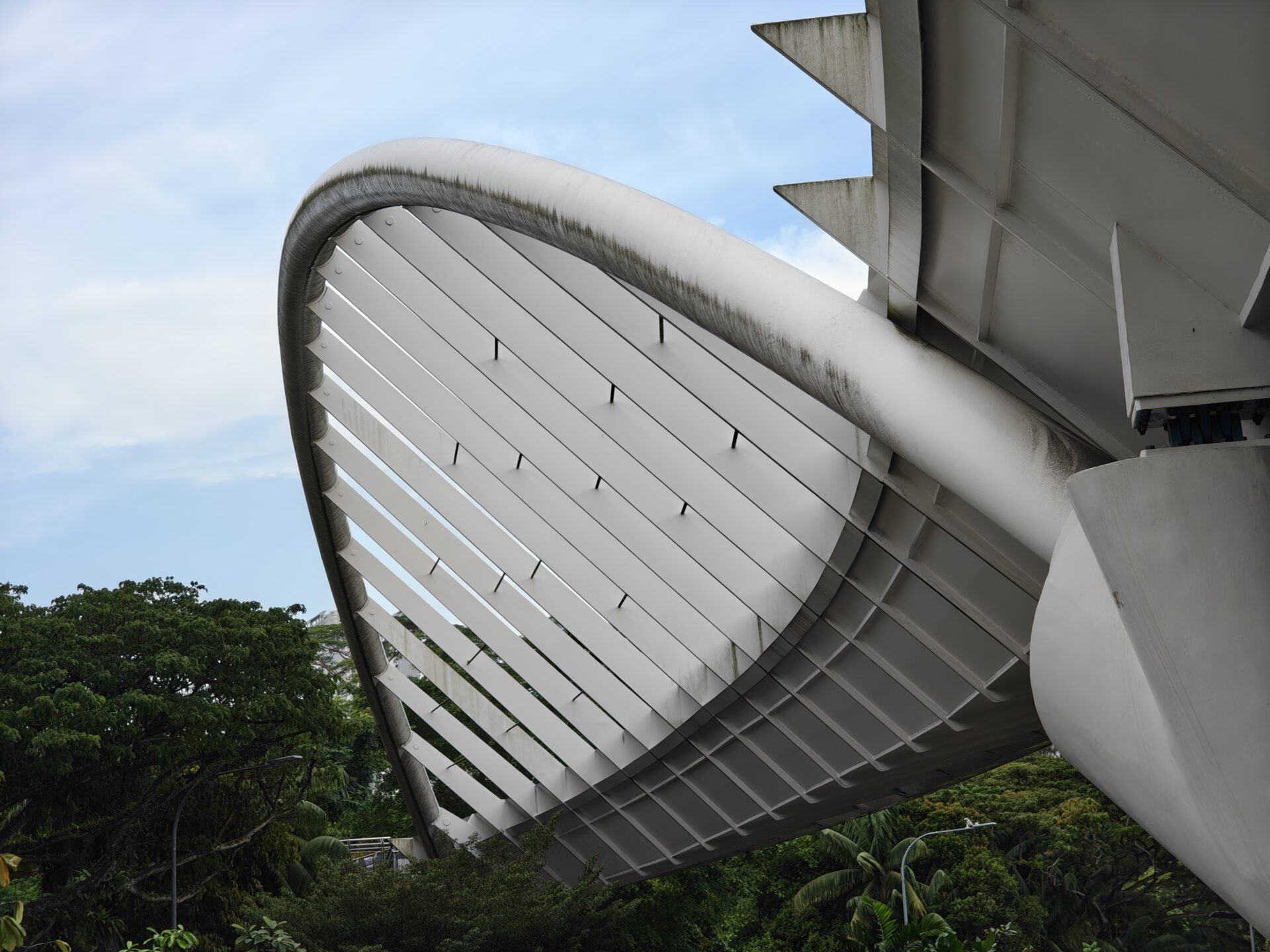
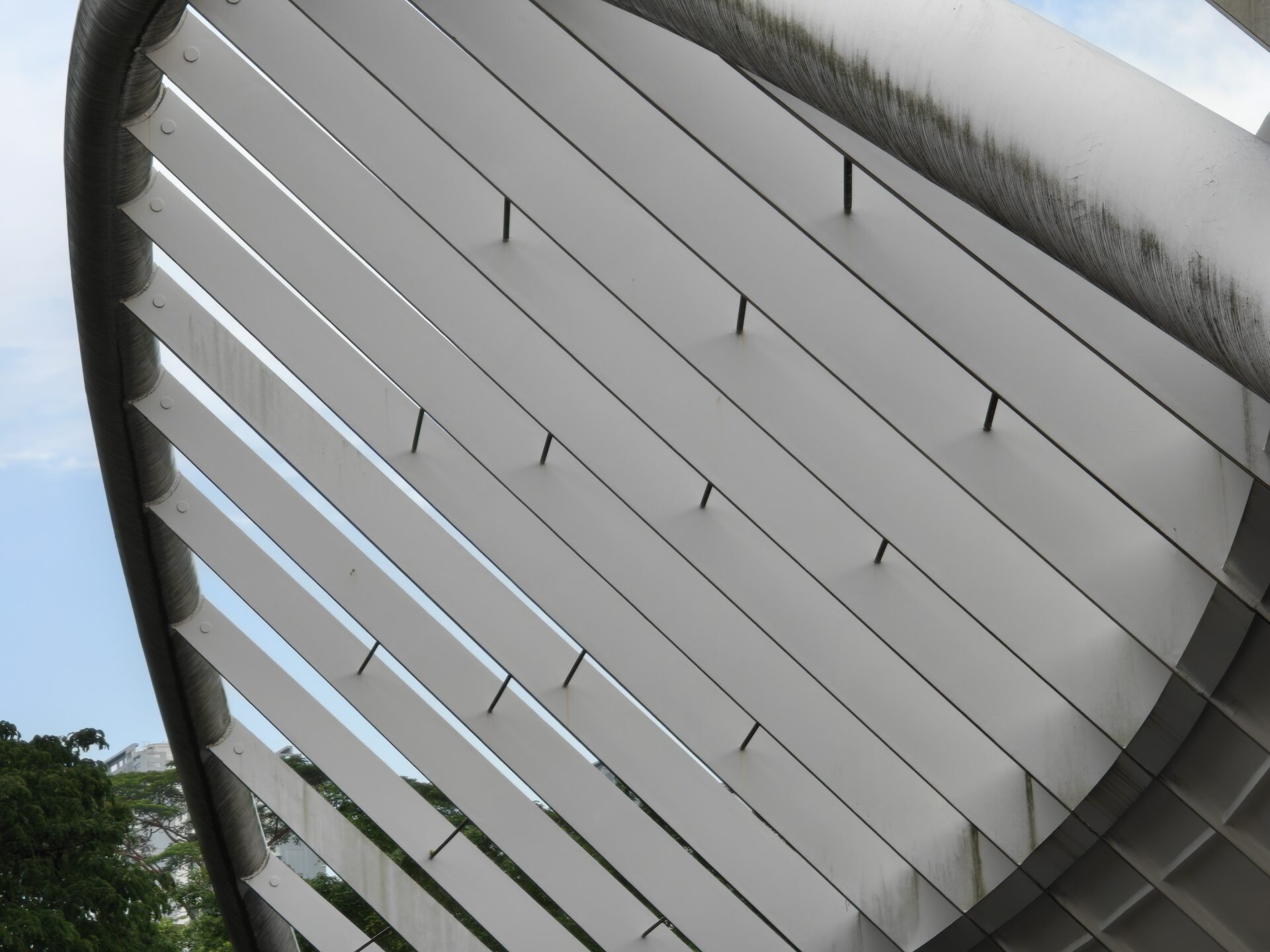
At the entrance to the HortPark, there is purple fringing at the thin canopy on the top right of the shot, but details are otherwise decently sharp. The main shooter gets everything in focus, if a little dark. The telephoto loses no detail, especially on the weathered arch bridge. A 6x crop gave very little reason to complain.


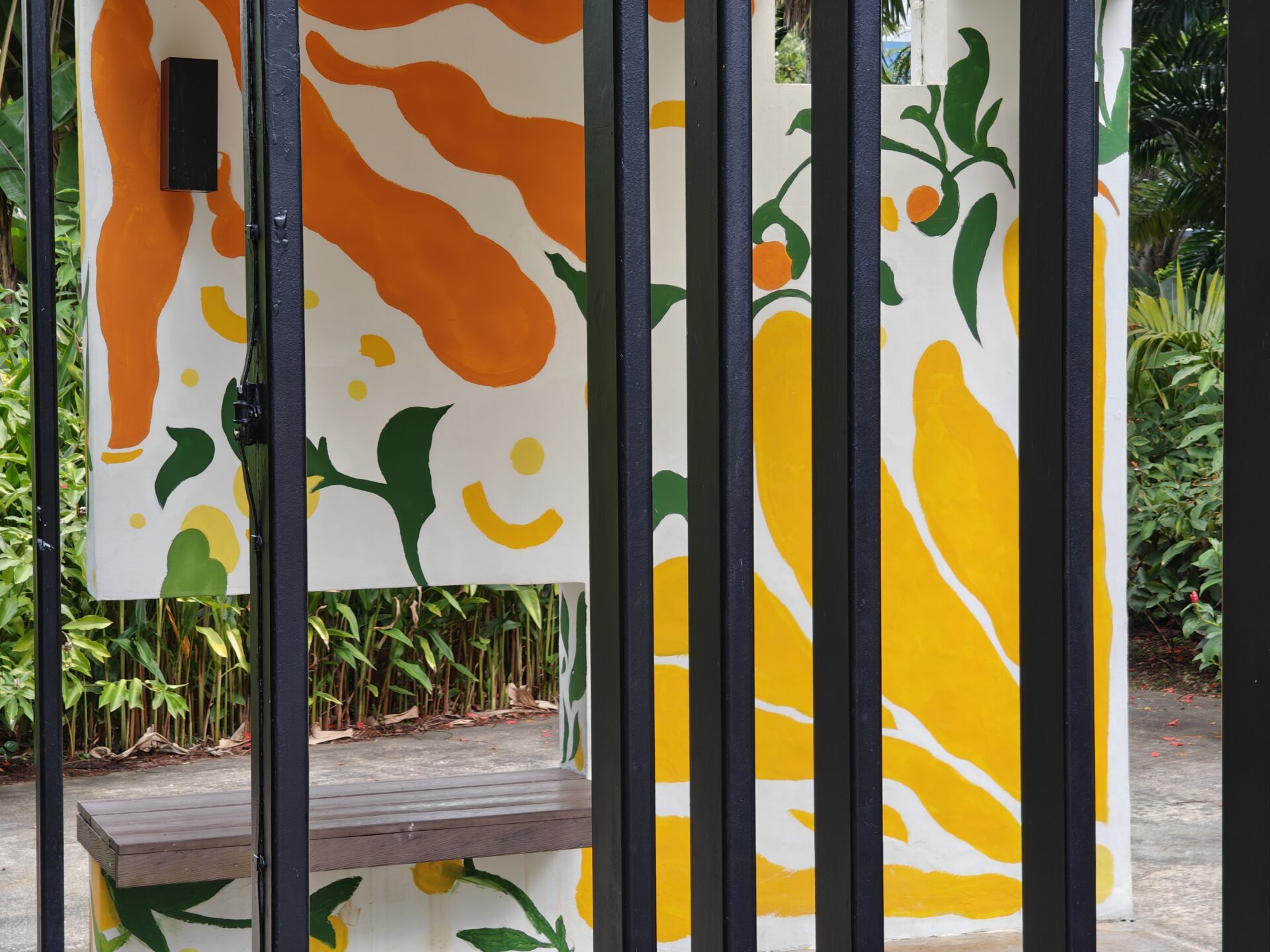
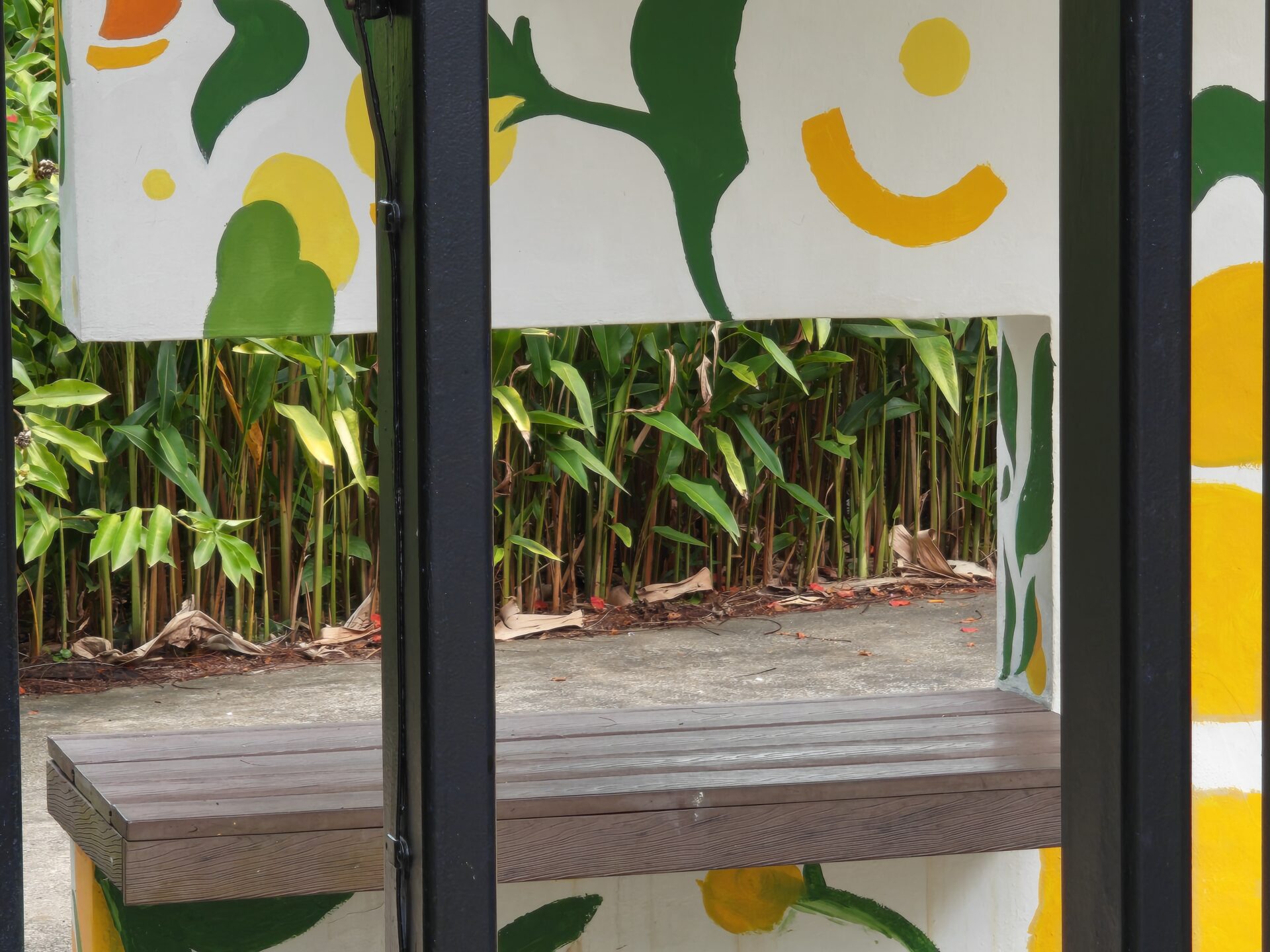
Moving onto the semi sheltered seating area, I thought the ultrawide is slightly overexposed but in a nice way. It does, however, faces distortion and fringing on the edges. The main shooter gets details right and colours popping, and one can even sense some depth of field with the greenery in the foreground versus the background. The 3x and 6x shots emphasise the chipping paint on the metal supports while presenting the depth of the background.
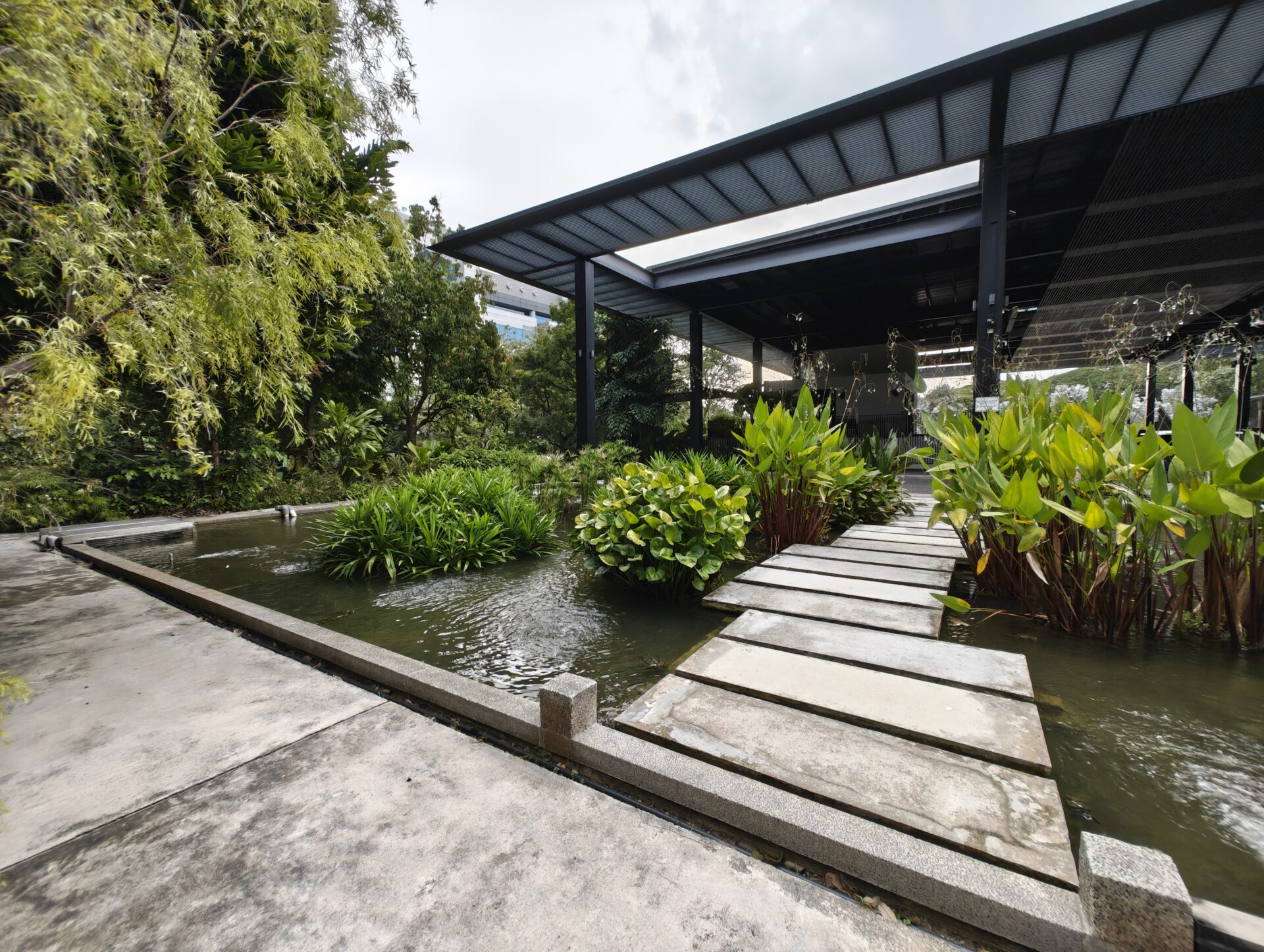
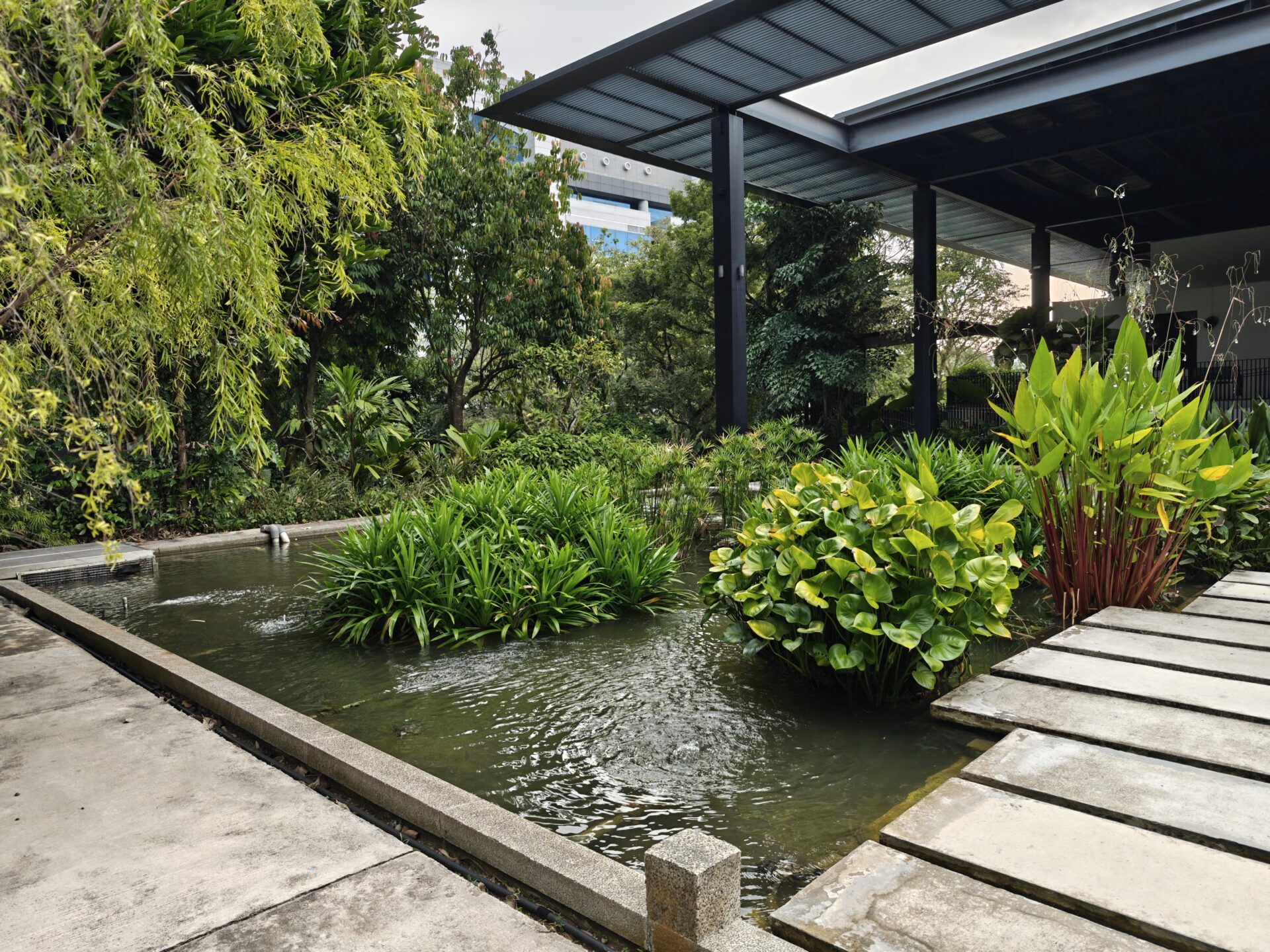


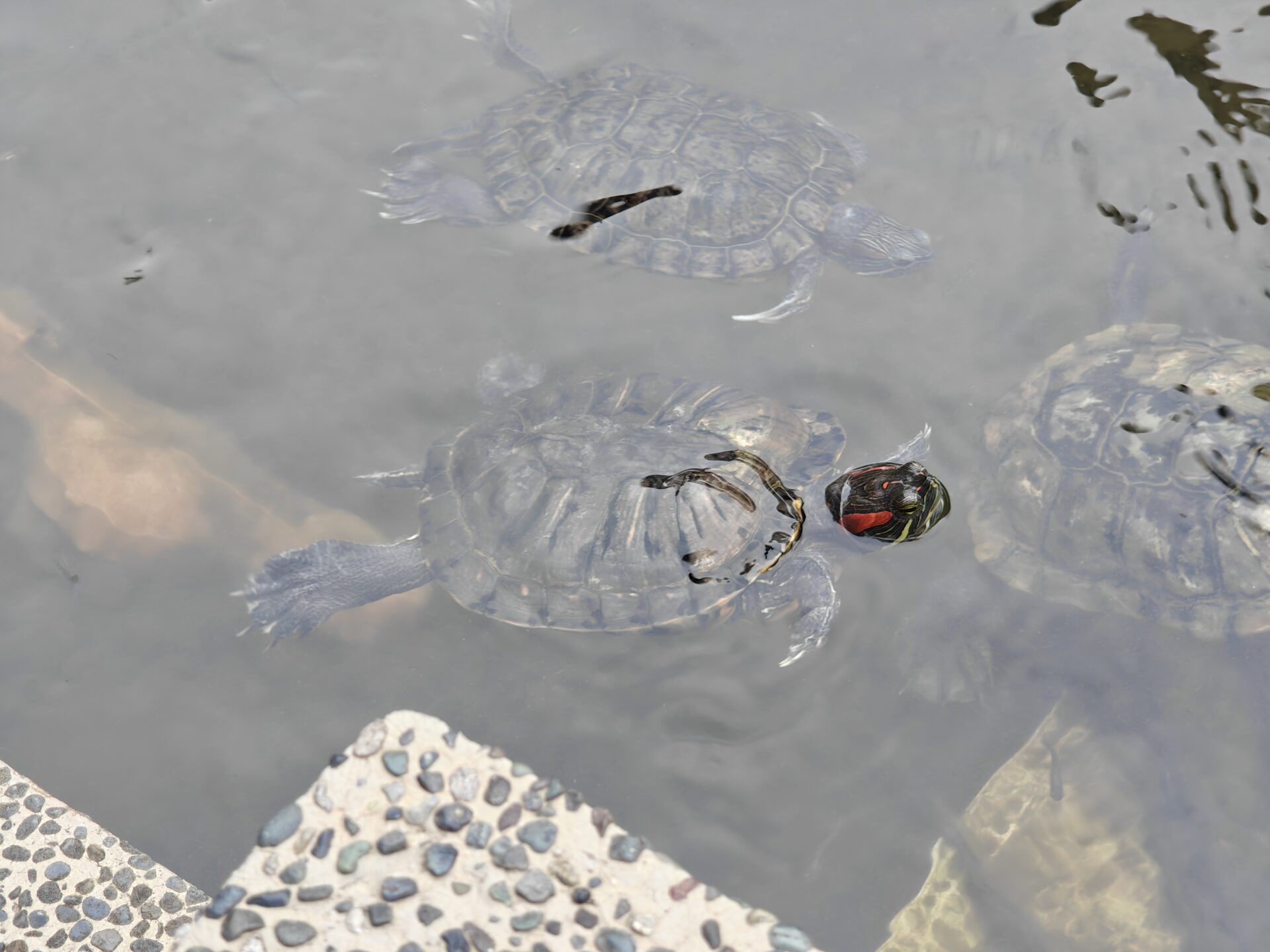
At the HortPark drop-off point, the distortion on the edges of the shot are a little less obvious given the framing, details are good overall, if a little dark. The main shooter added detail to whatever seemed a little fuzzy in the ultrawide, and has tasteful detail. Impressive detail and depth on the telephoto and 6x crops.
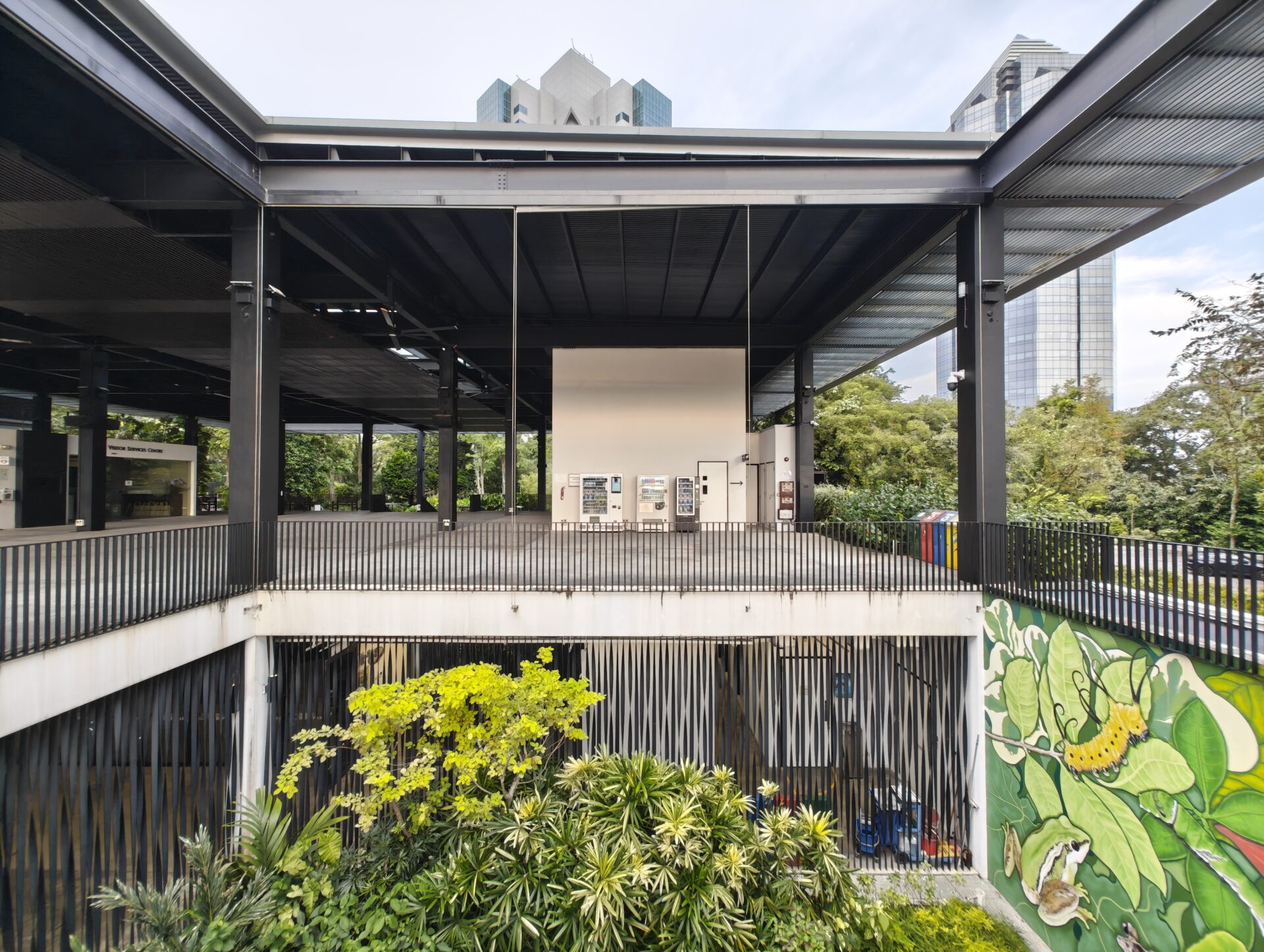
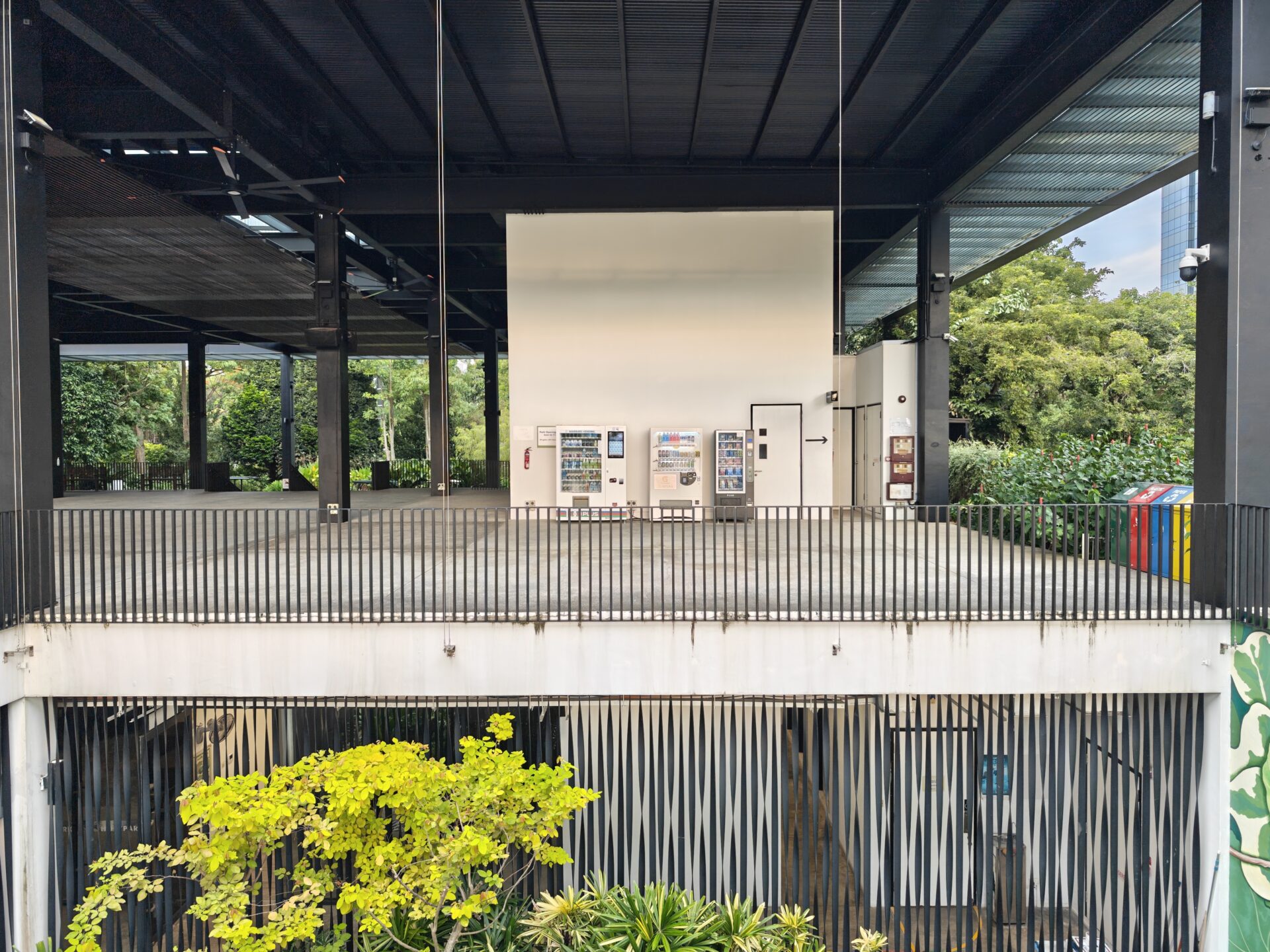
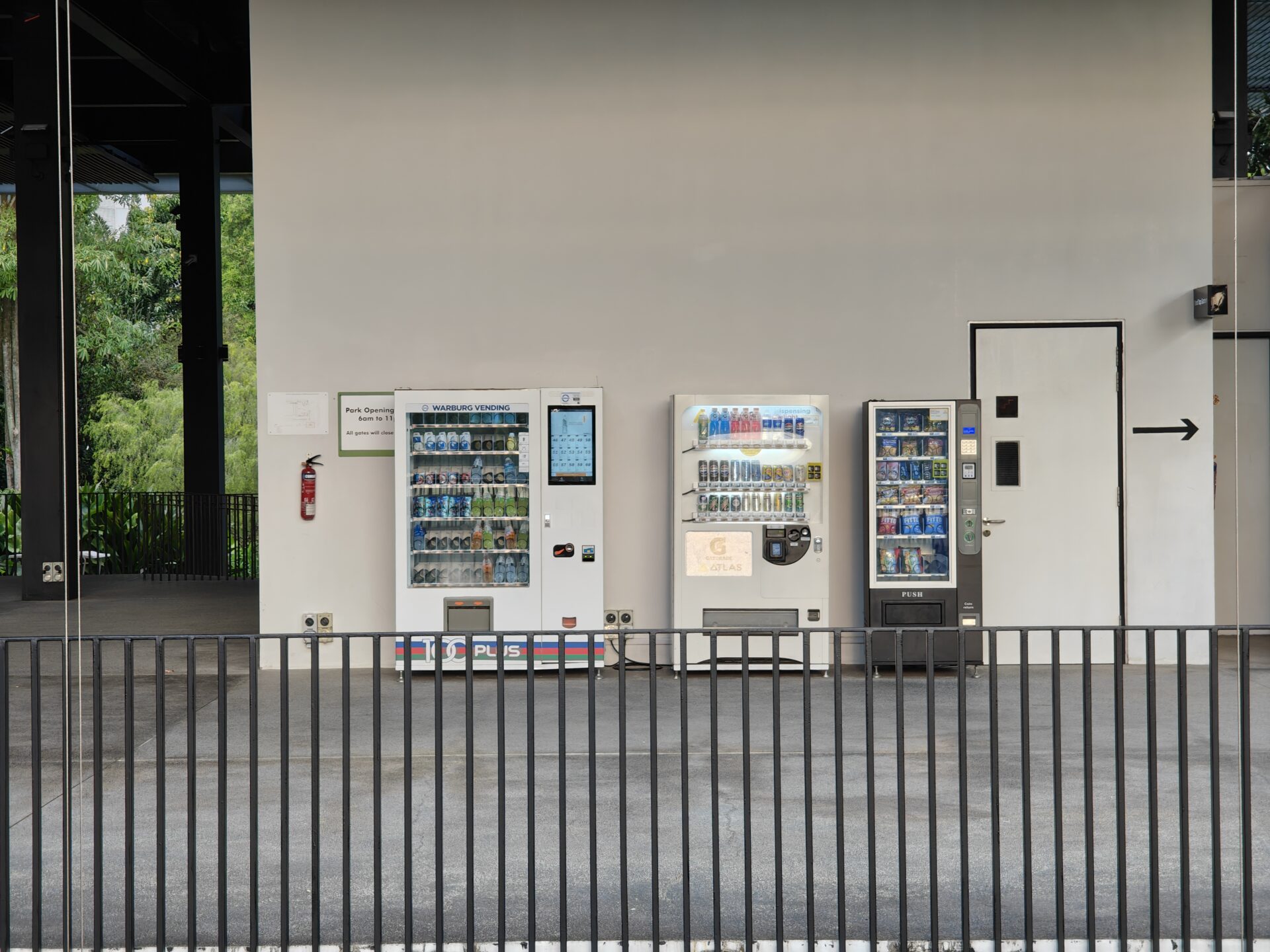
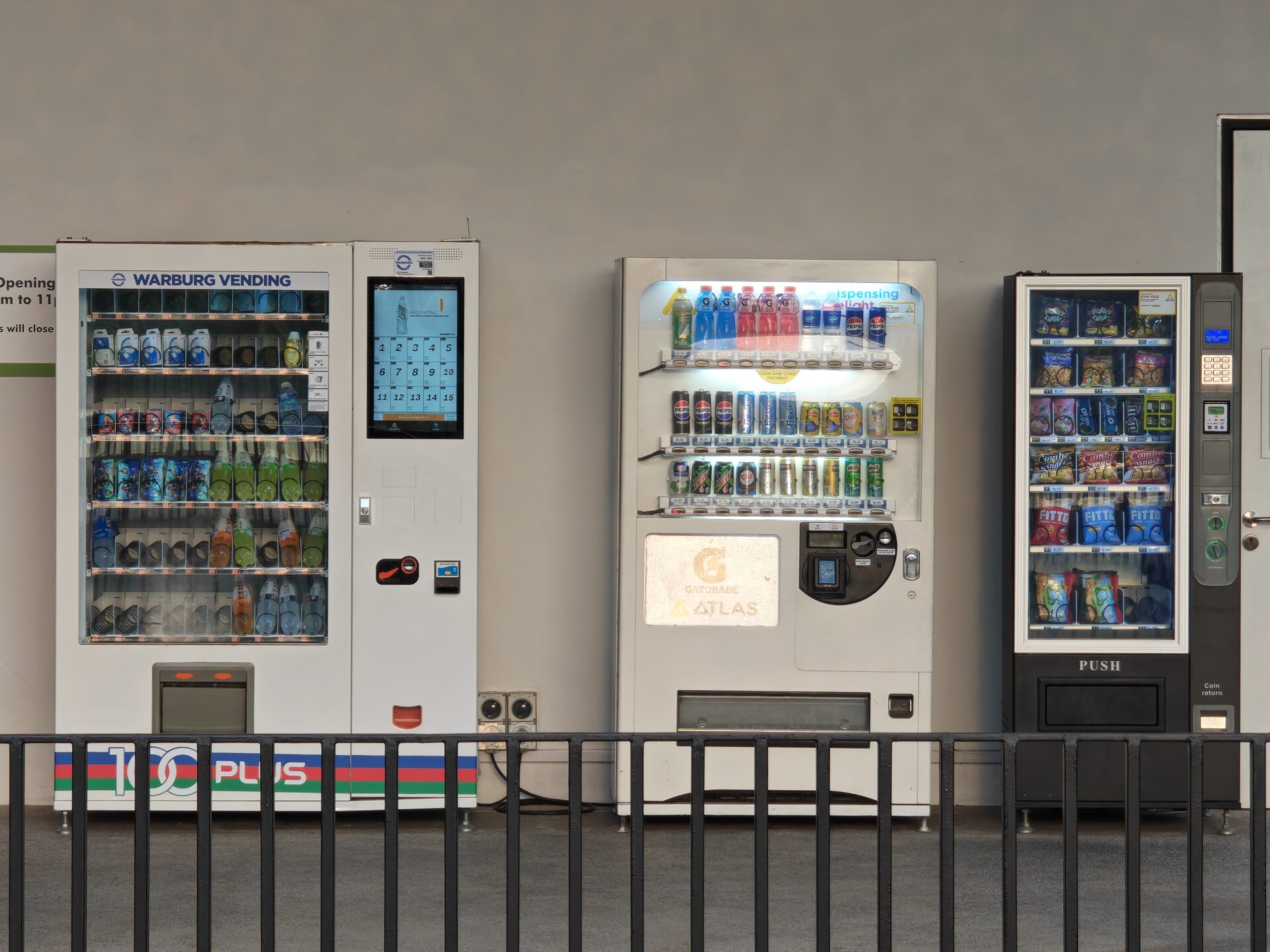
Looking across a recessed garden to the HortPark drop-off, the ultrawide does a fine job presenting a wide view of the plaza. The main, telephoto and 6x shots nail details and colour, even if the shot from the main camera is slightly overexposed.
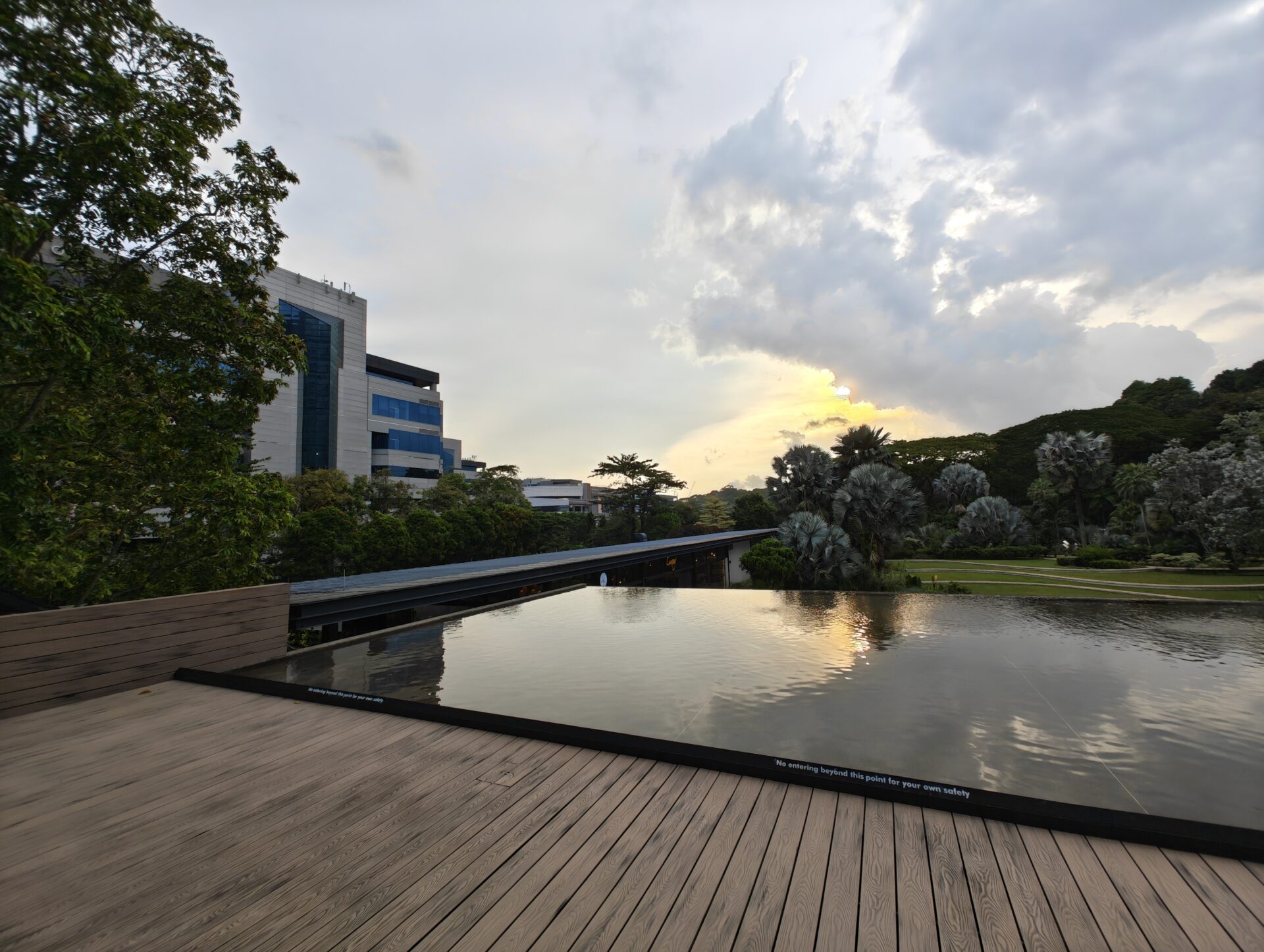
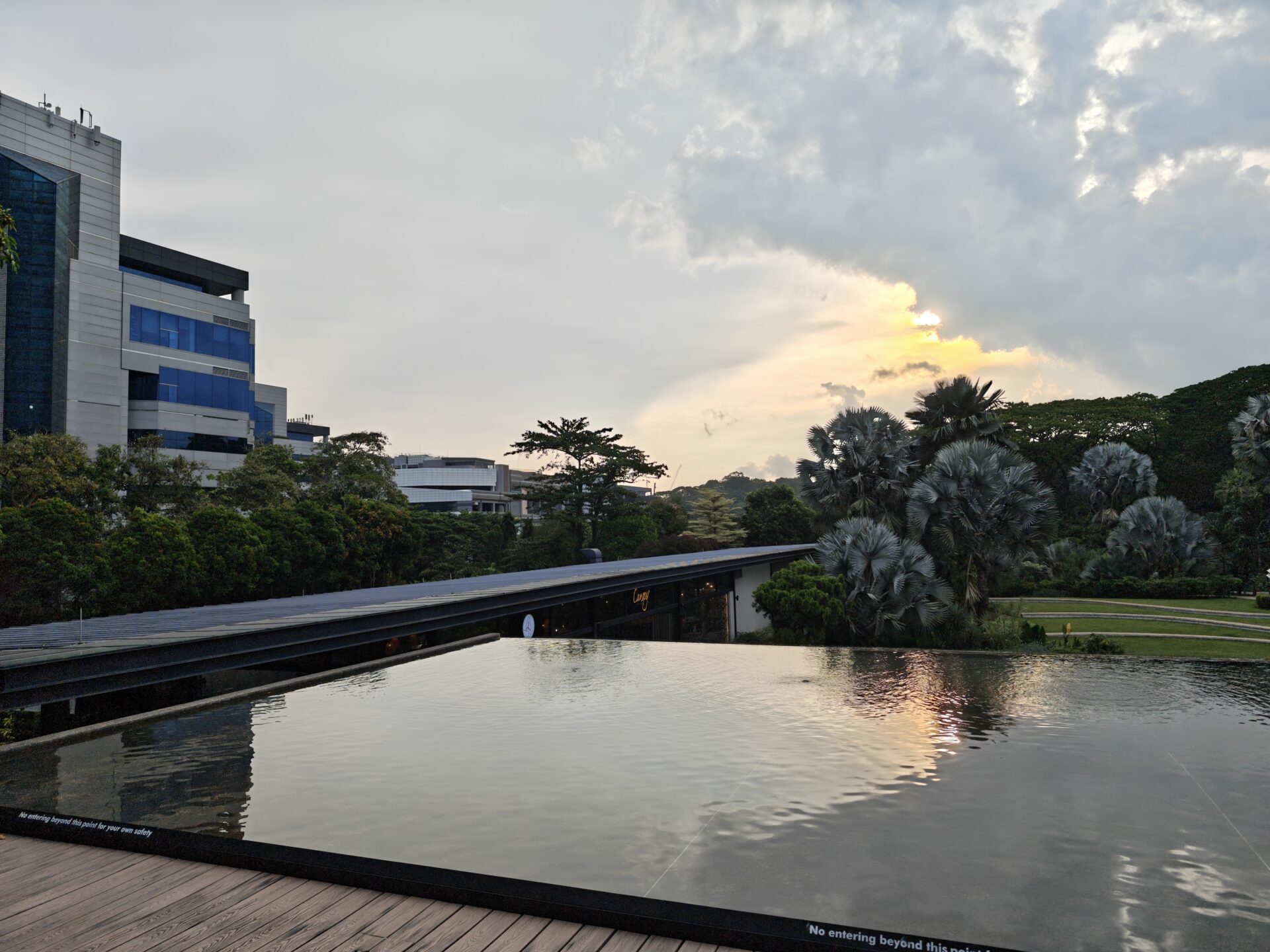


Looking across HortPark’s water feature and into the sunset, I though the colour balance was pretty nice across the multiple shots, with little overexposure until the 6x shot.
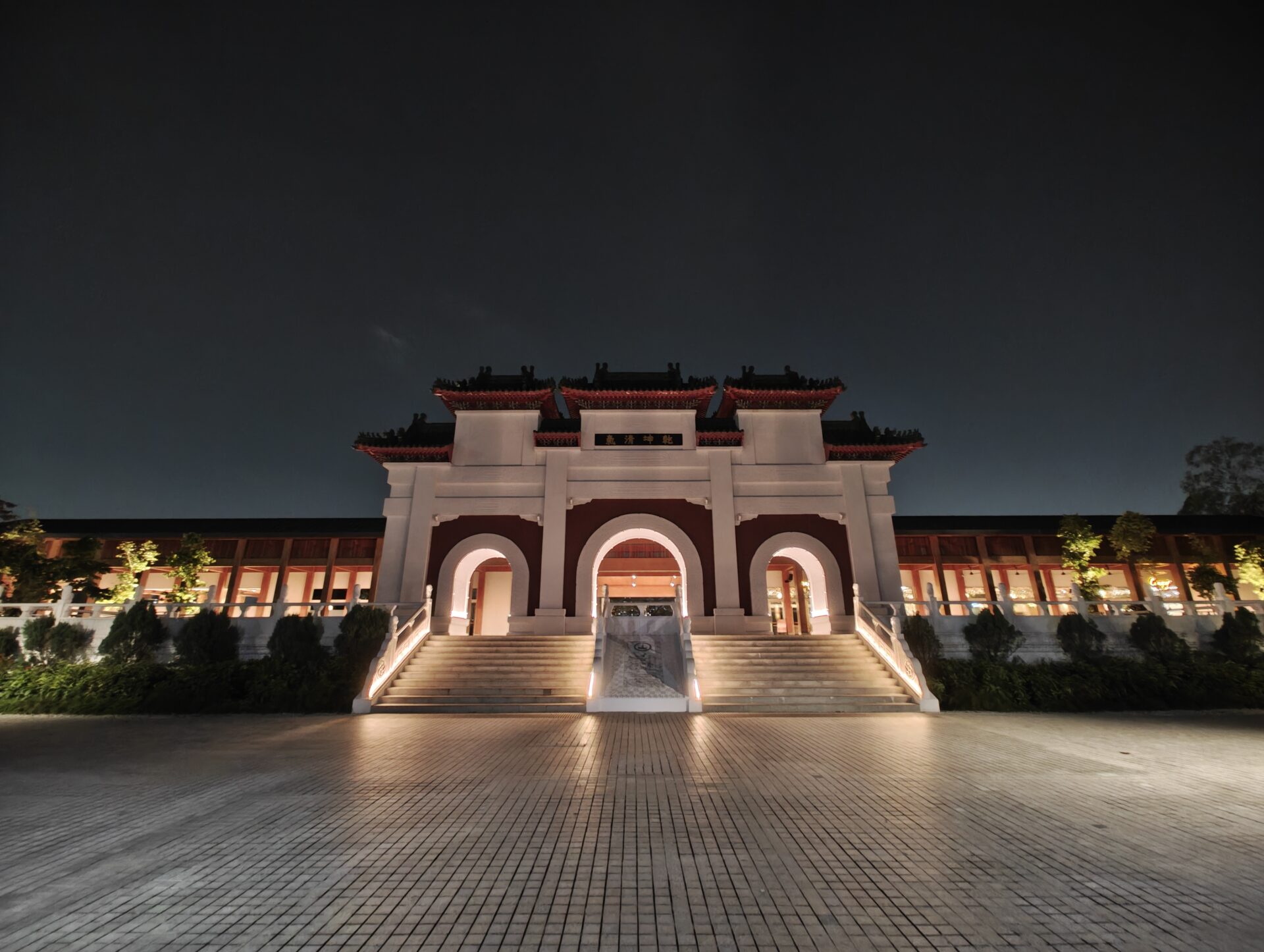
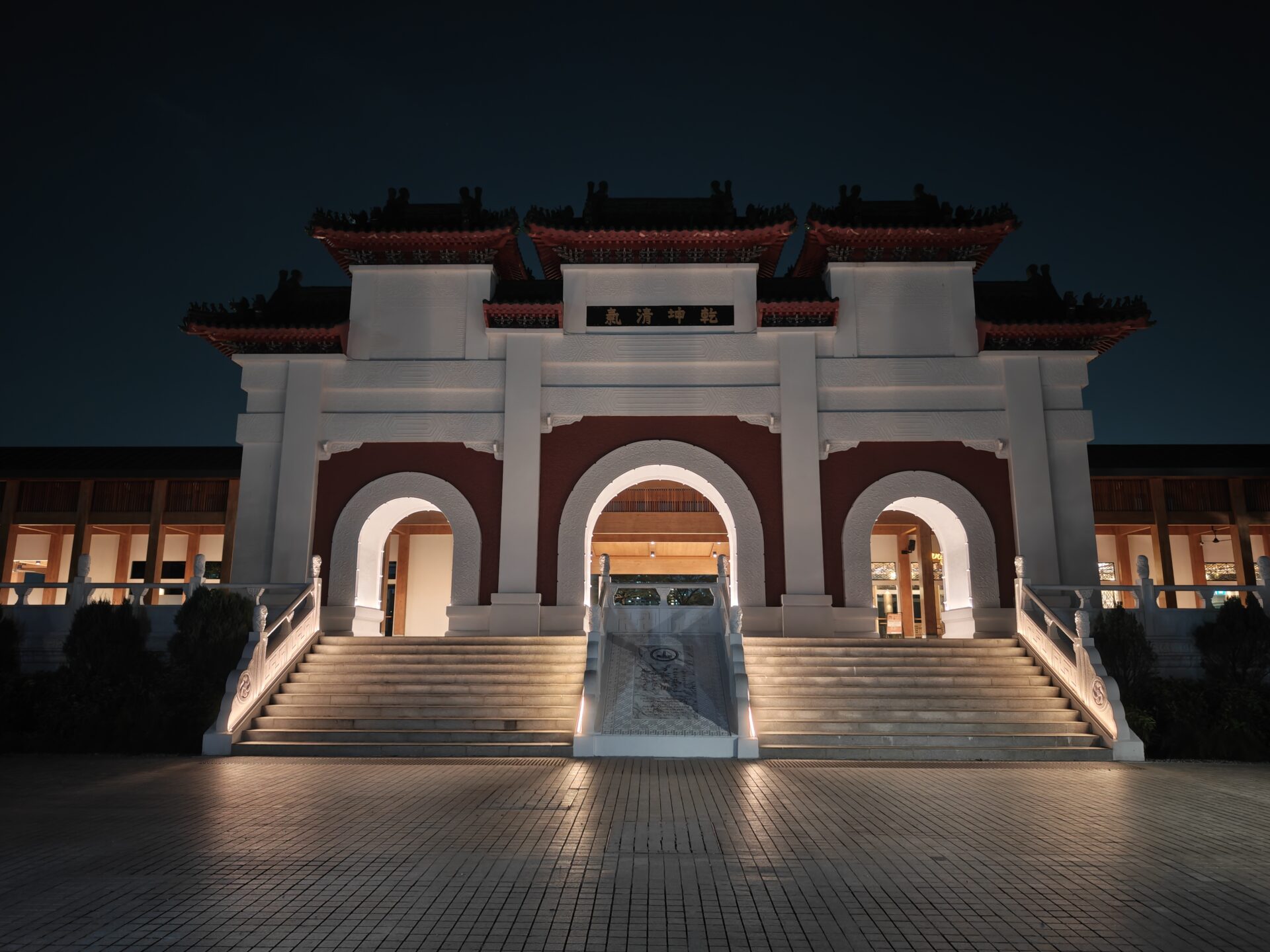
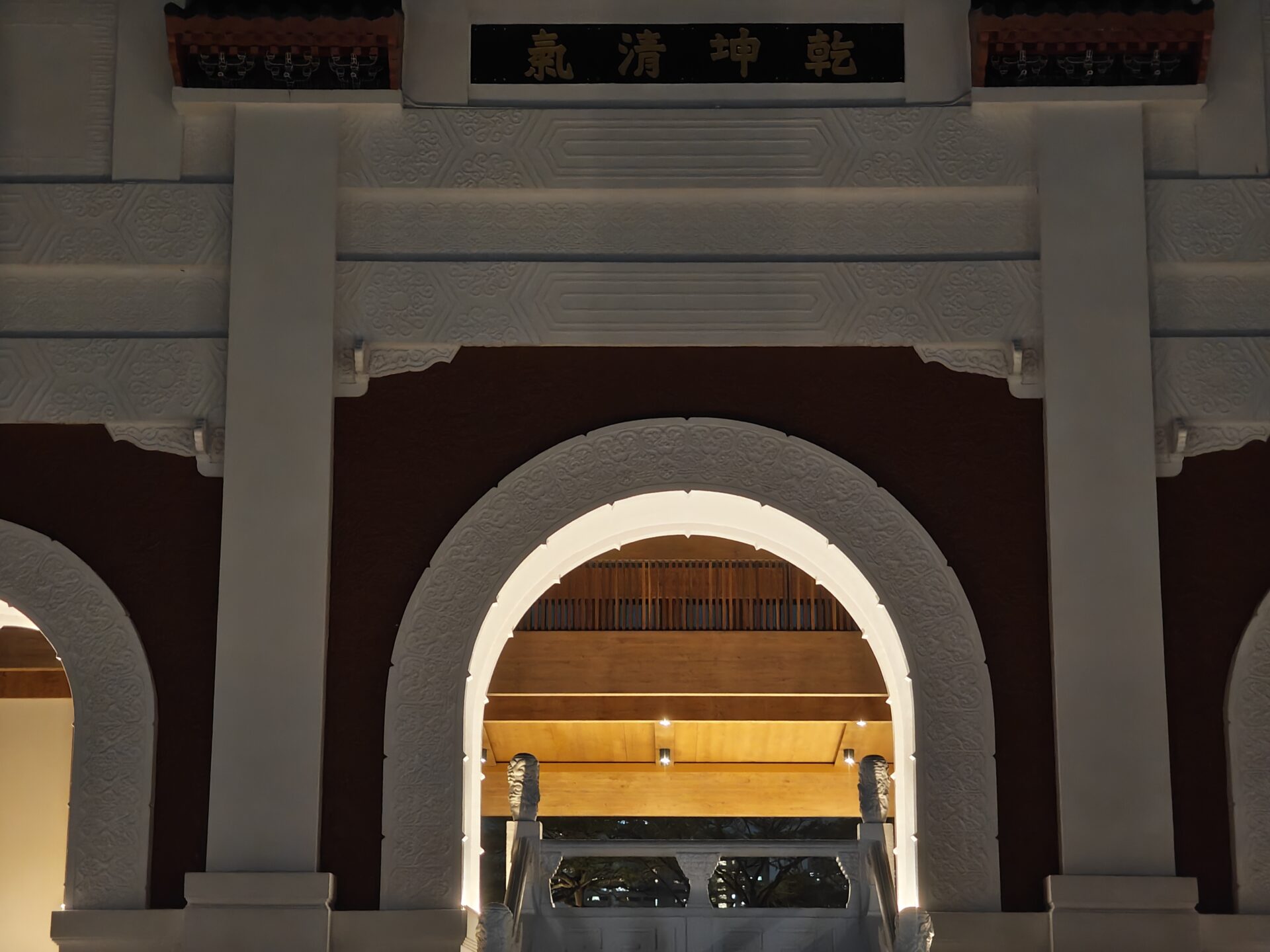
As night fell, the Chinese Garden Grand Arch looked majestic, though a little fuzzy with detail and a little bright under the ultrawide. The main shooter got all the details down, albeit as a darker shot. At 3x zoom, no details were lost, and both the foreground and background looked good.
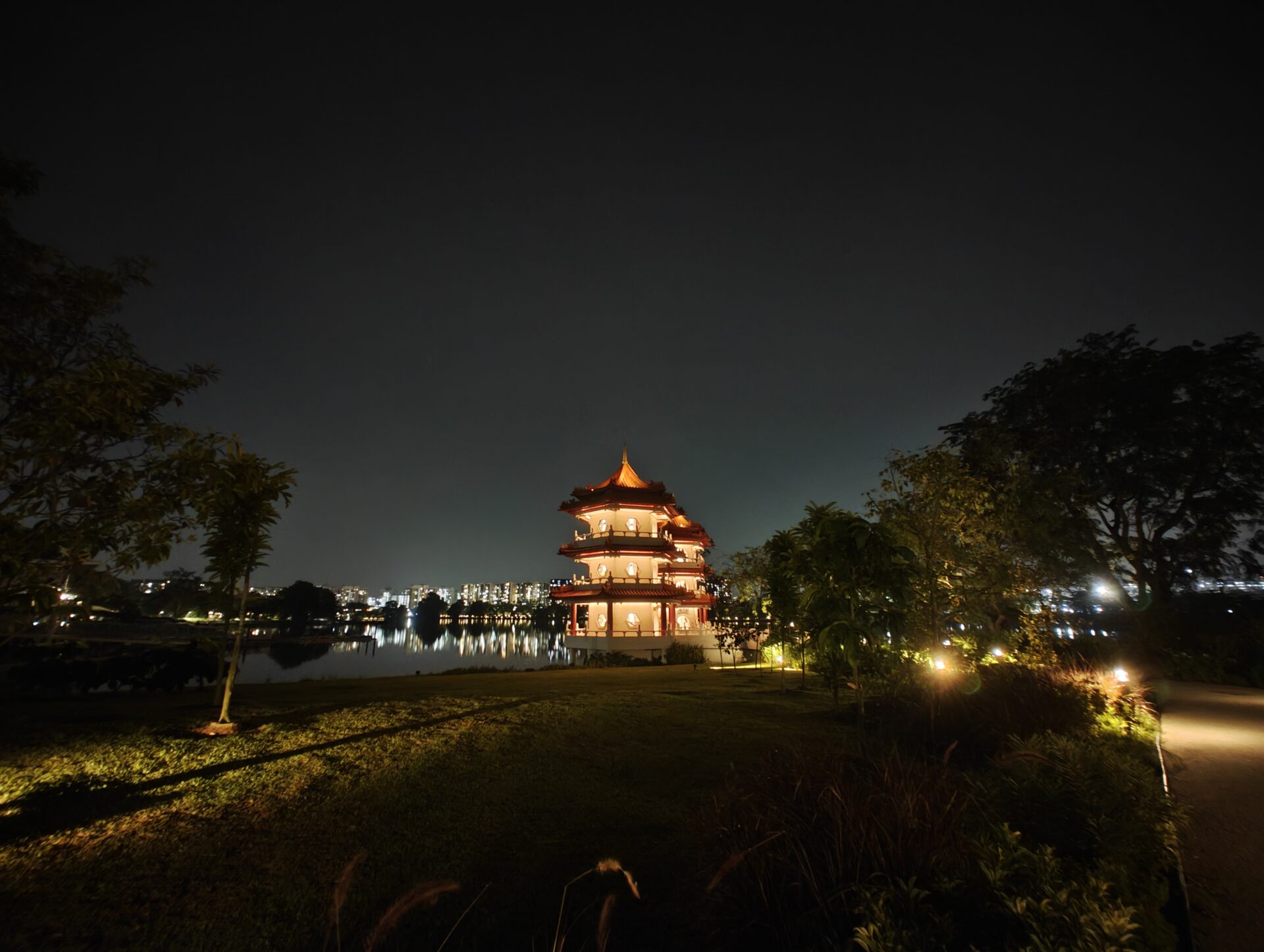
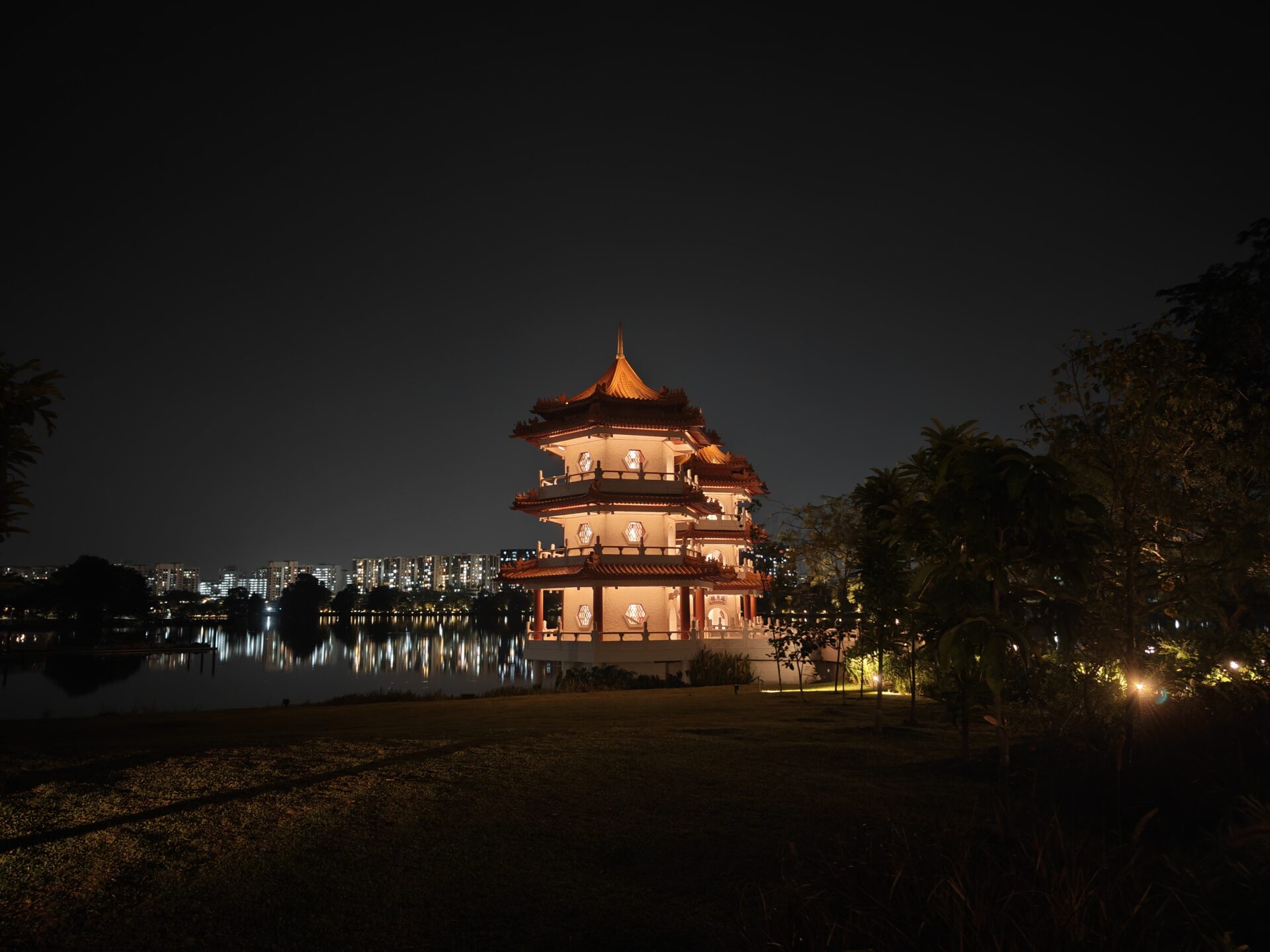
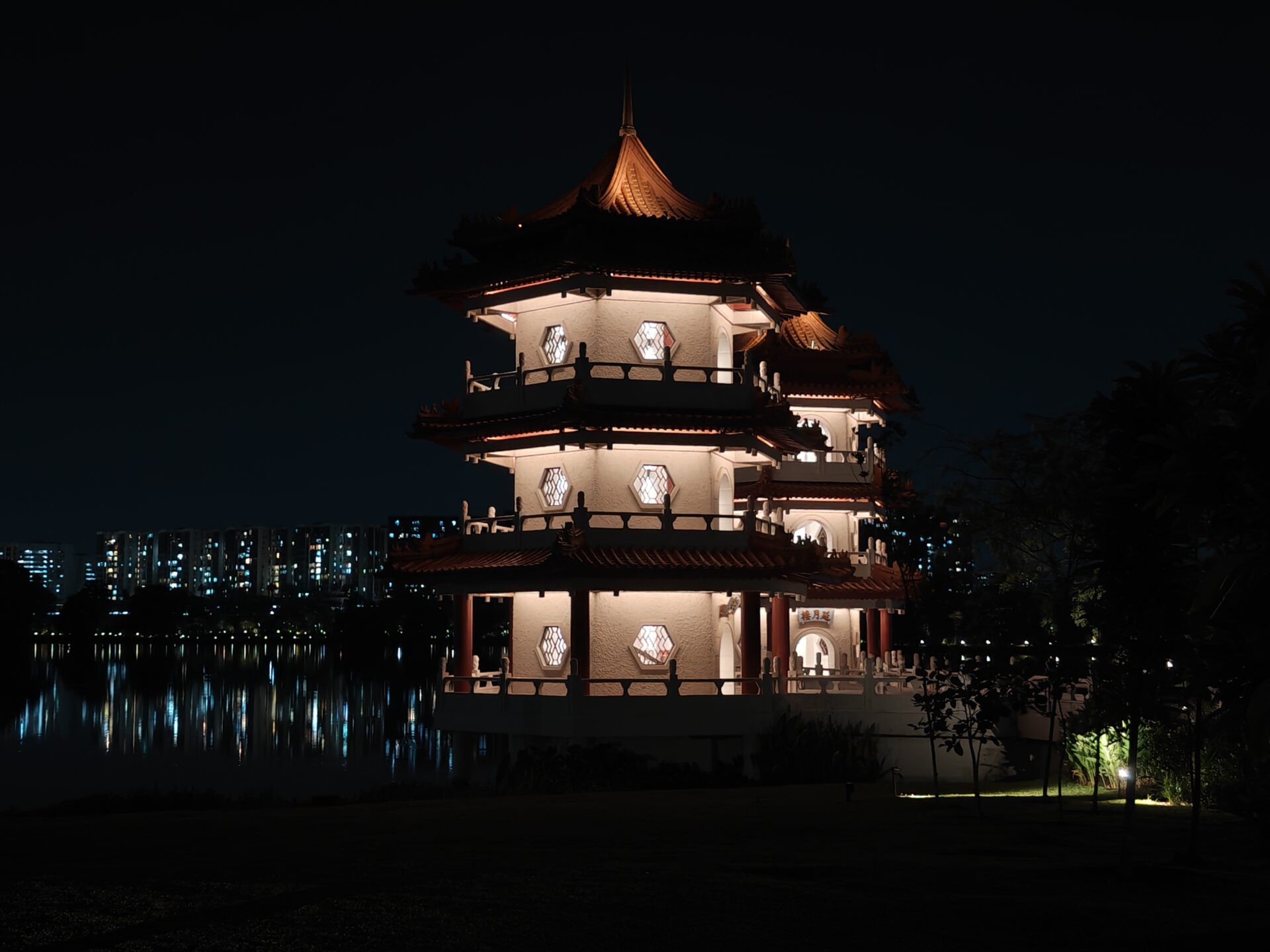
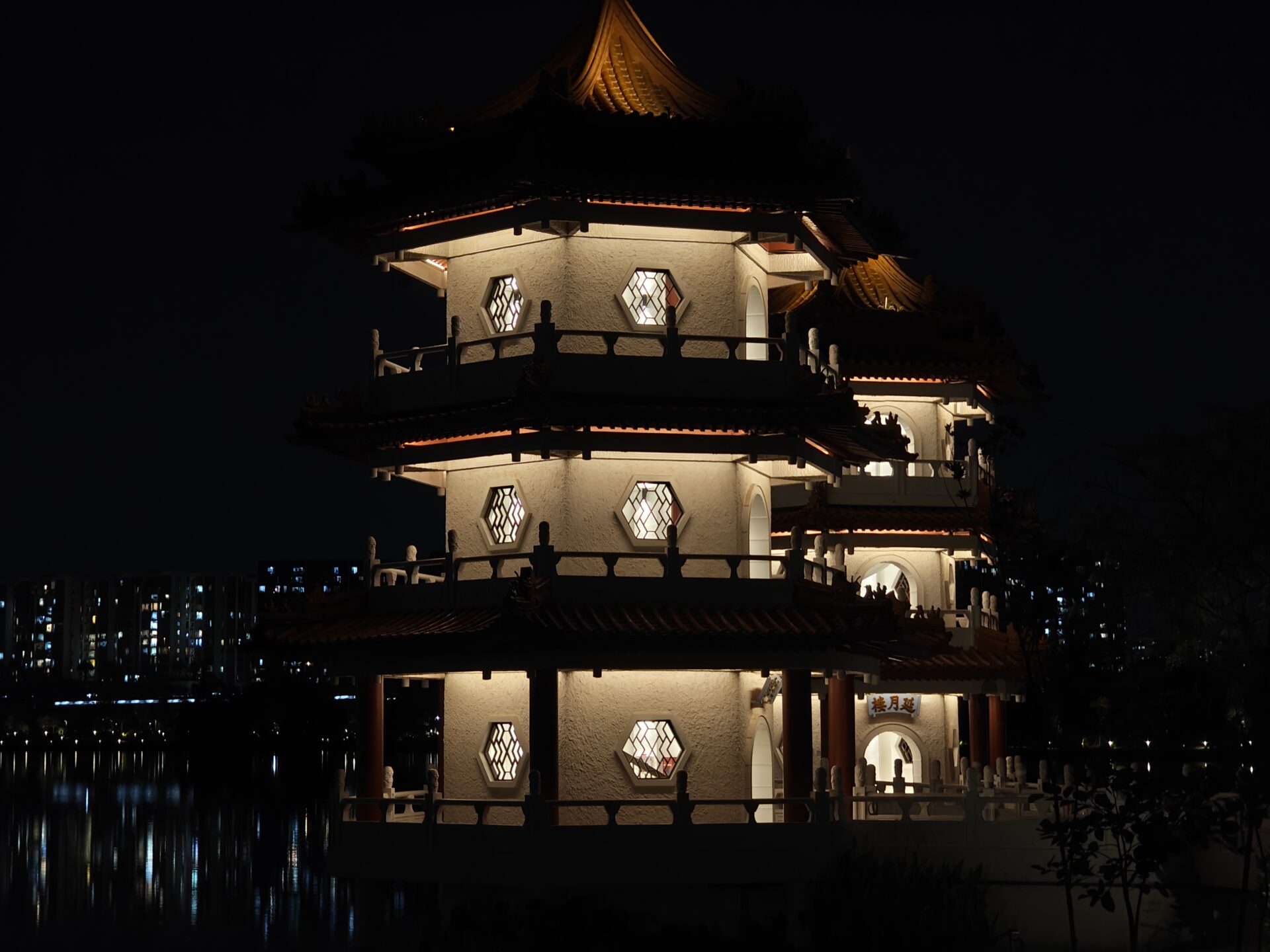
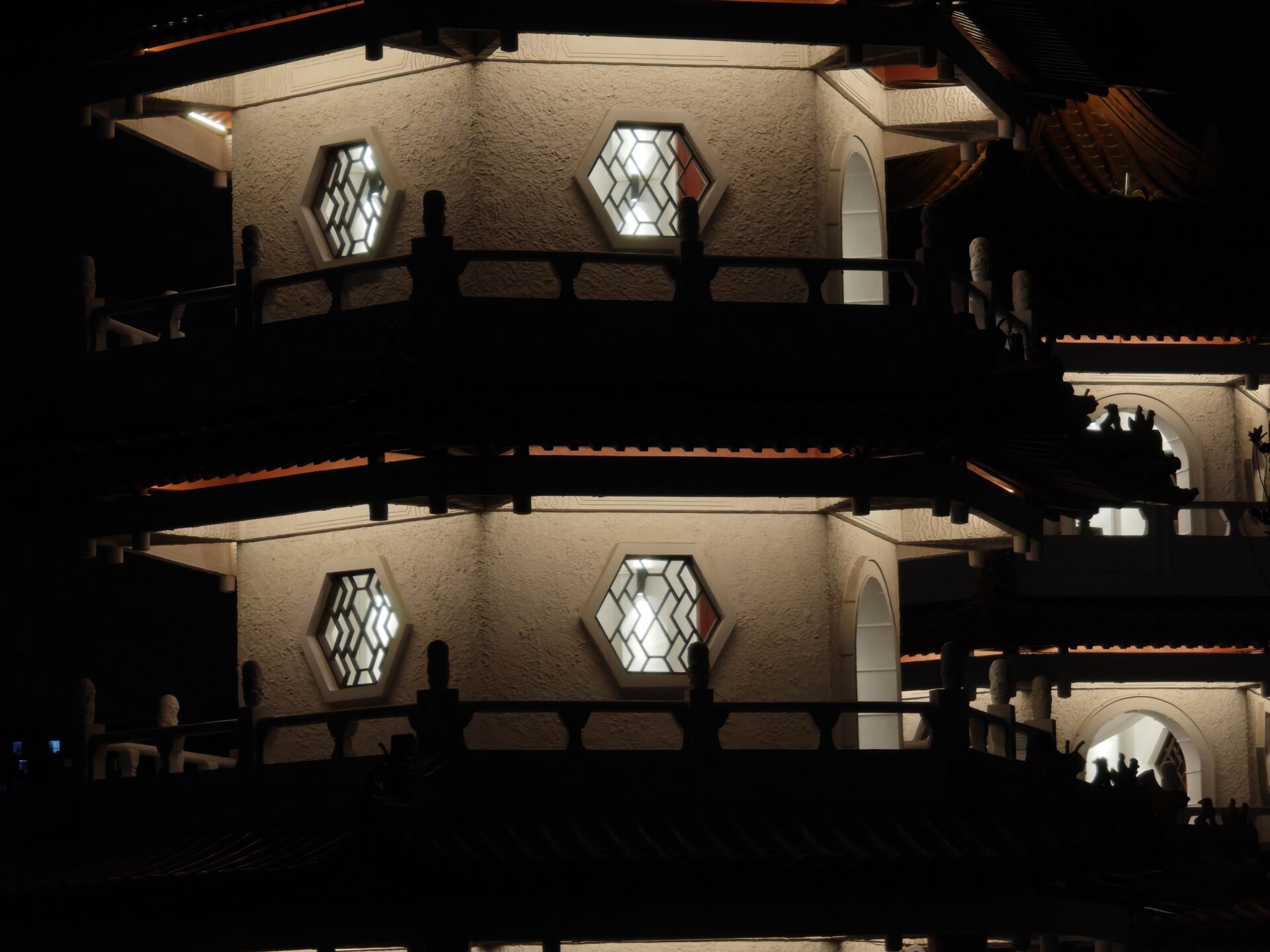
Looking towards the iconic Twin Pagodas, the well-lit pagodas and barely lit surroundings proved a challenge to the ultrawide shooter. The main shooter did a much finer job detailing the pagodas, but seemed to have veered warm in colour temperature – The 2x crop was much nicer. Telephoto retained good detail, while the 6x exposed struggles with focus.
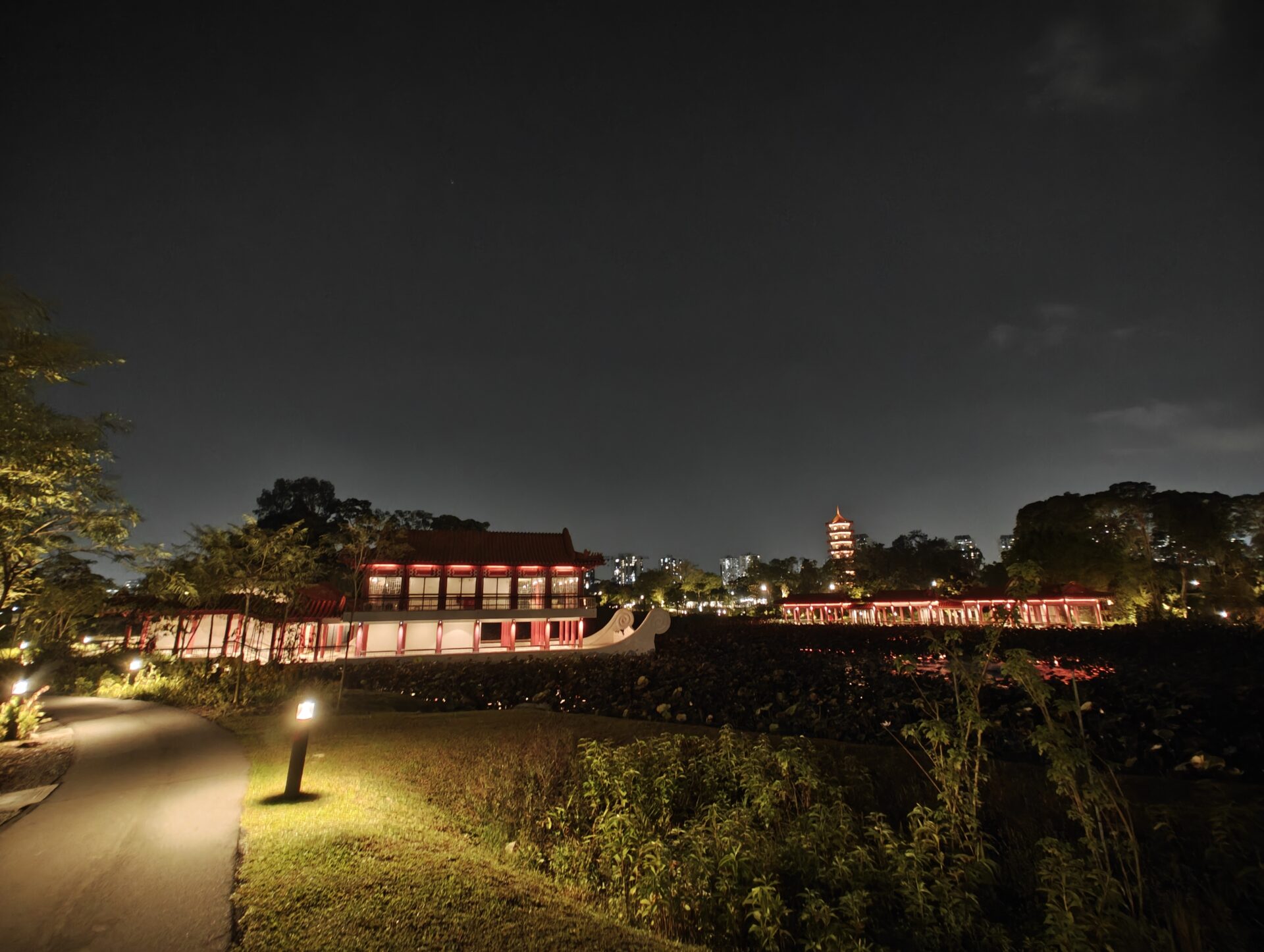
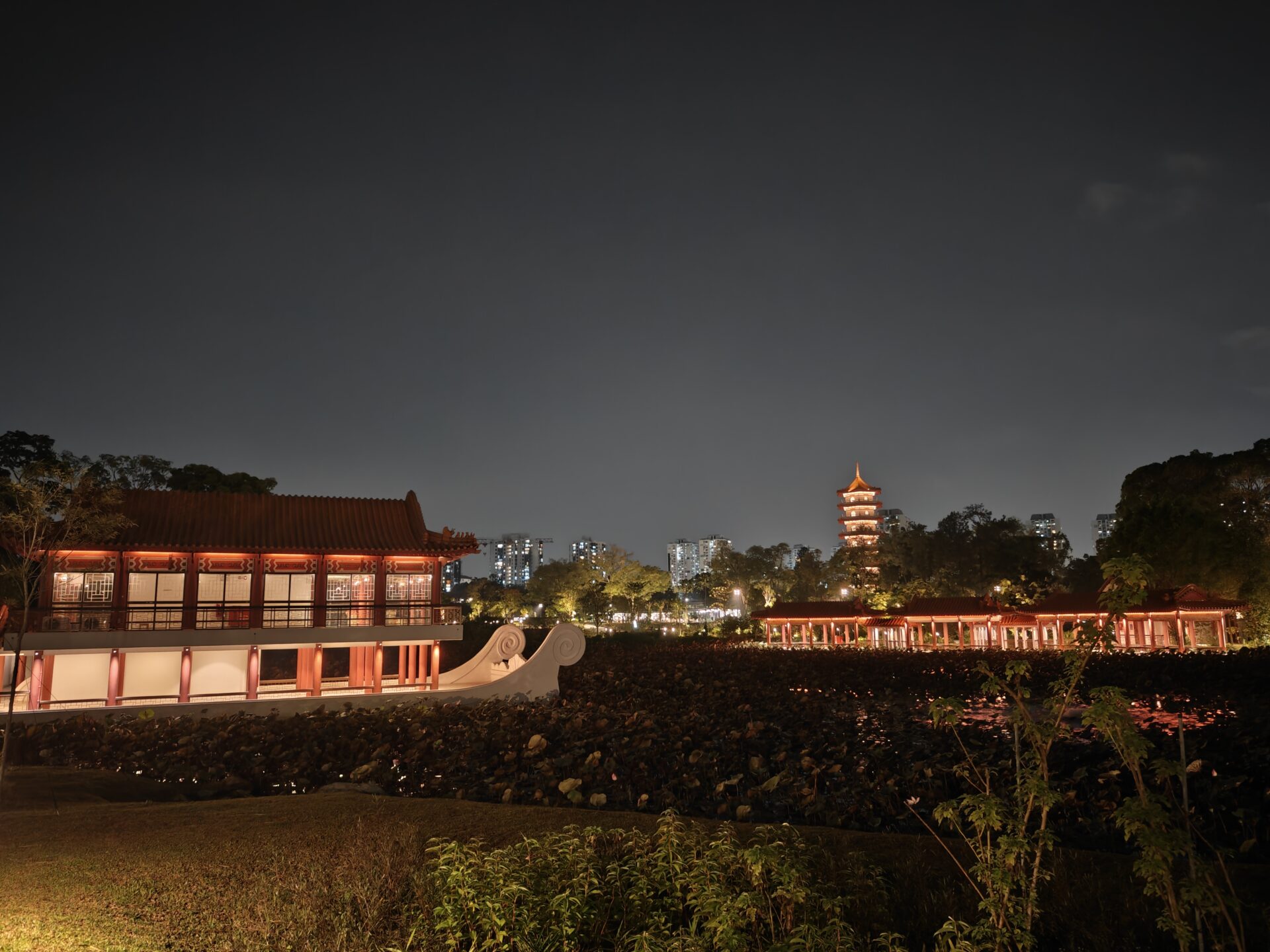
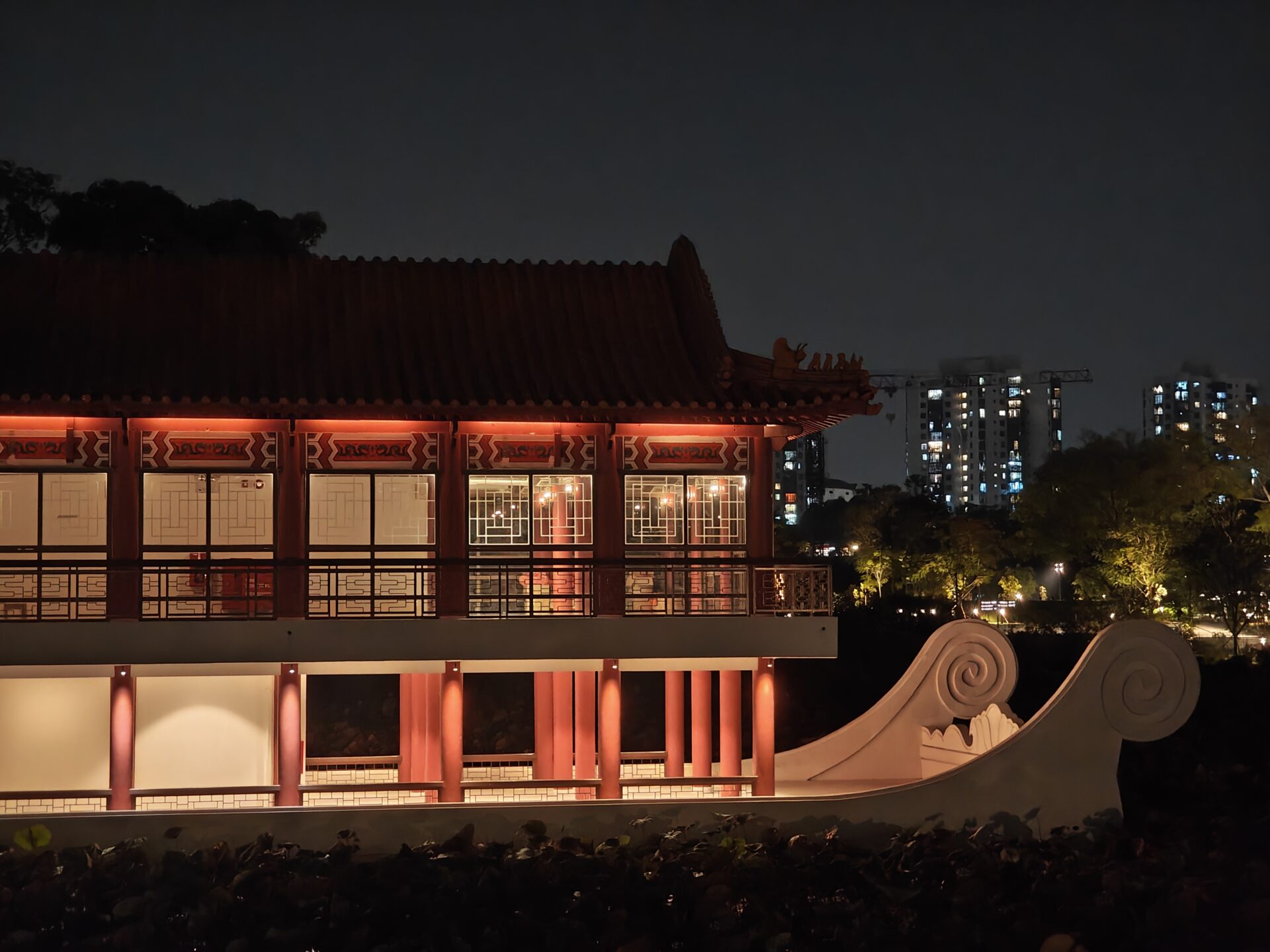
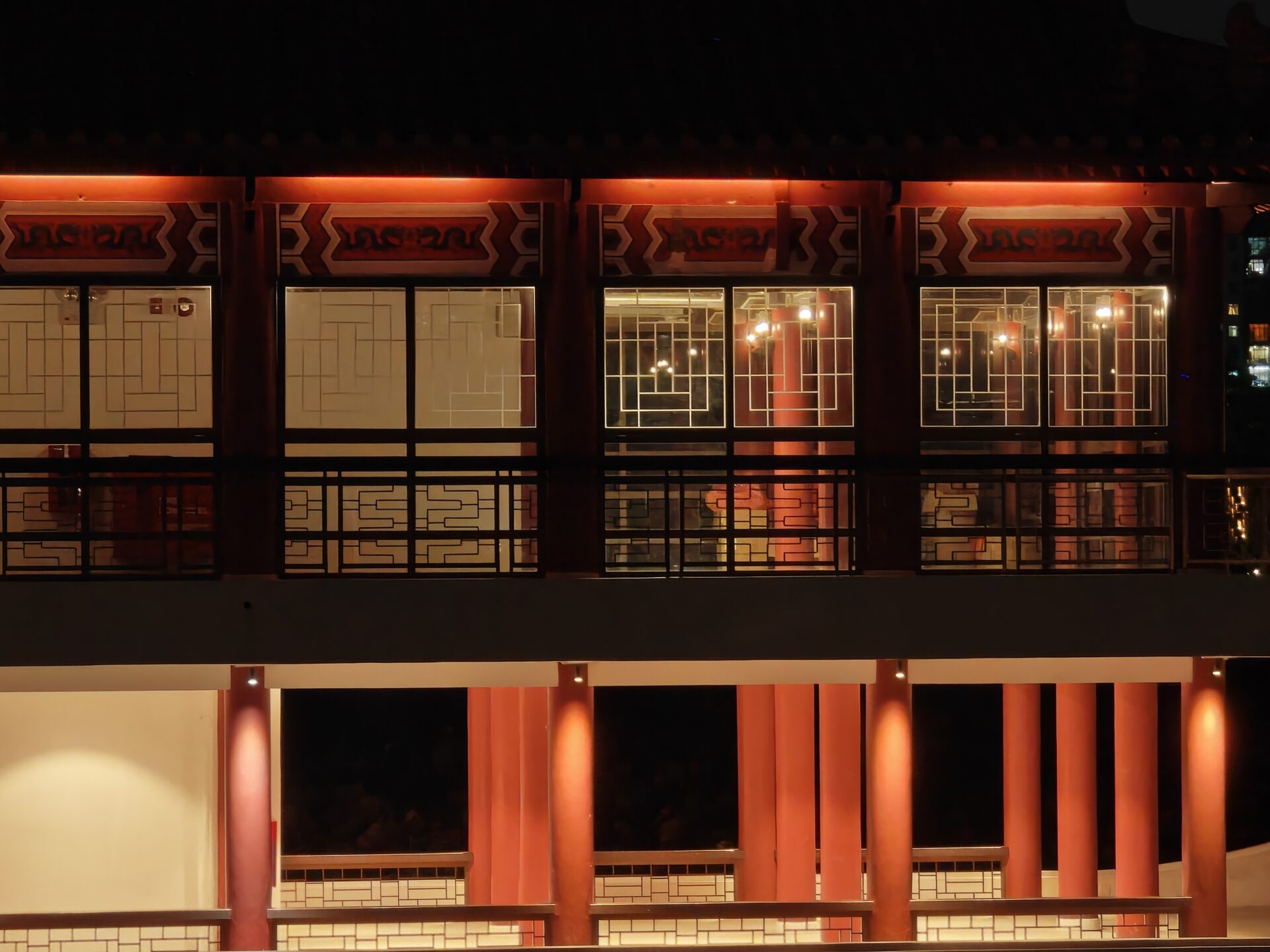
Overlooking the “Stoneboat” structure and the pagodas in the background, this is a very challenging shot that mixed bright and dark. The ultrawide struggled with fuzziness especially where it is dark. The main shooter got the stoneboat in good detail, but not the lily pond. 3x did a good job with the “Stoneboat”, and I thought did a better job with the dark areas. The 6x crop actually looks pretty good here.




Conclusion
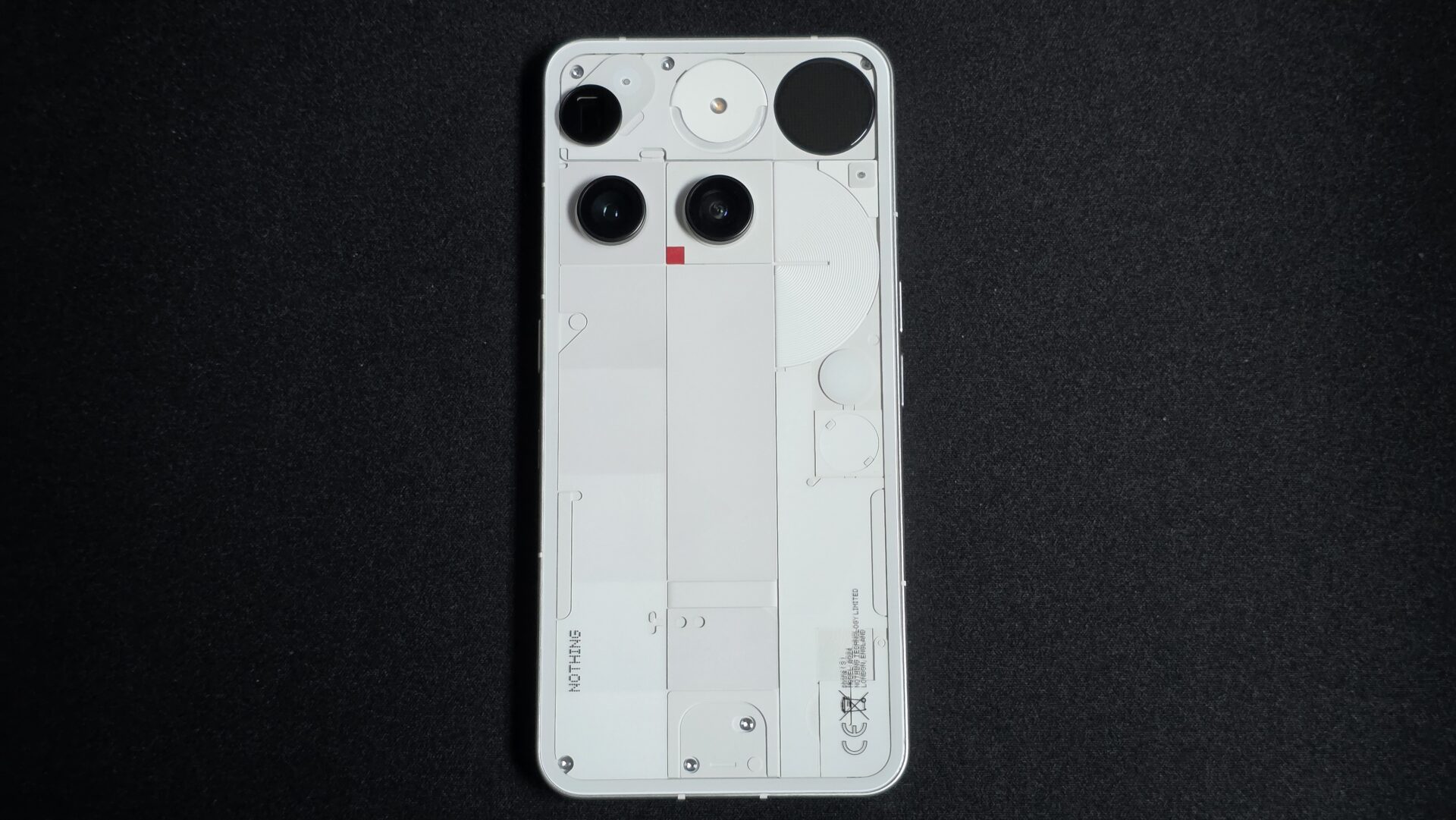
The Nothing Phone (3) embodies the spirit of a “flagship-lite” device. The processor is a dash below the best but performs with little compromise. A three-camera array captures images good for most average users without sacrificing a dedicated telephoto. Even the price is flagship but not quite.
We found battery life to be above average, despite experiences of other reviewers. Your (battery) mileage may vary, literally, perhaps.
Glyph is more fun than in past years, while the same smooth, clean, monochrome Nothing OS is a trusted companion as always.
Techgoondu has walked the journey with this seasoned upstart when it launched its first mobile phone. We recommend Nothing’s reigning flagship if you eschew the Apples and Samsungs seen all over, and want to stand out with its unique “flagship-lite” proposition against the competition.
Understandably if you don’t fall into this niche segment, other more clearly defined models might be more attractive. For some, it might make sense to pay more for the “premium flagship” with no compromise, or less for the “value-oriented flagship” that is good for less cash.
